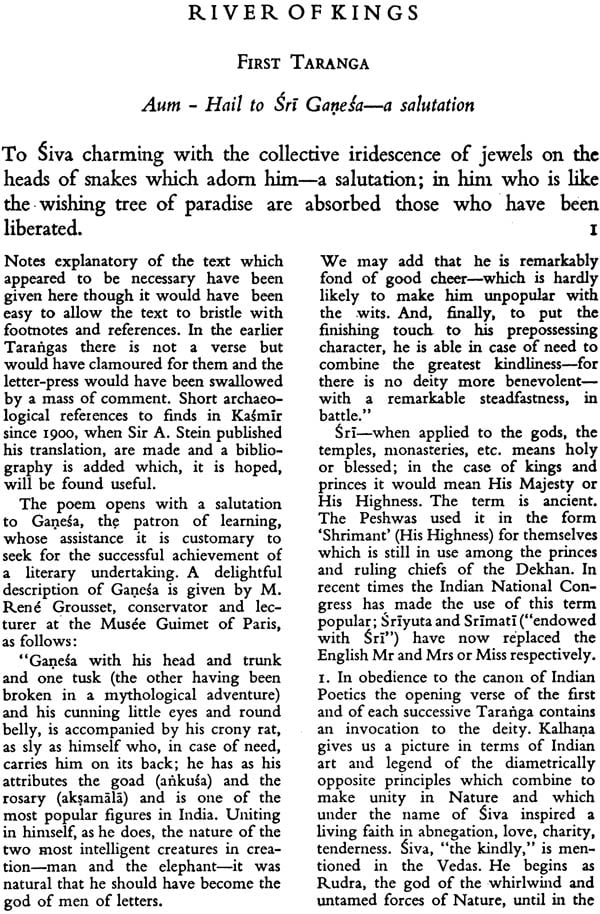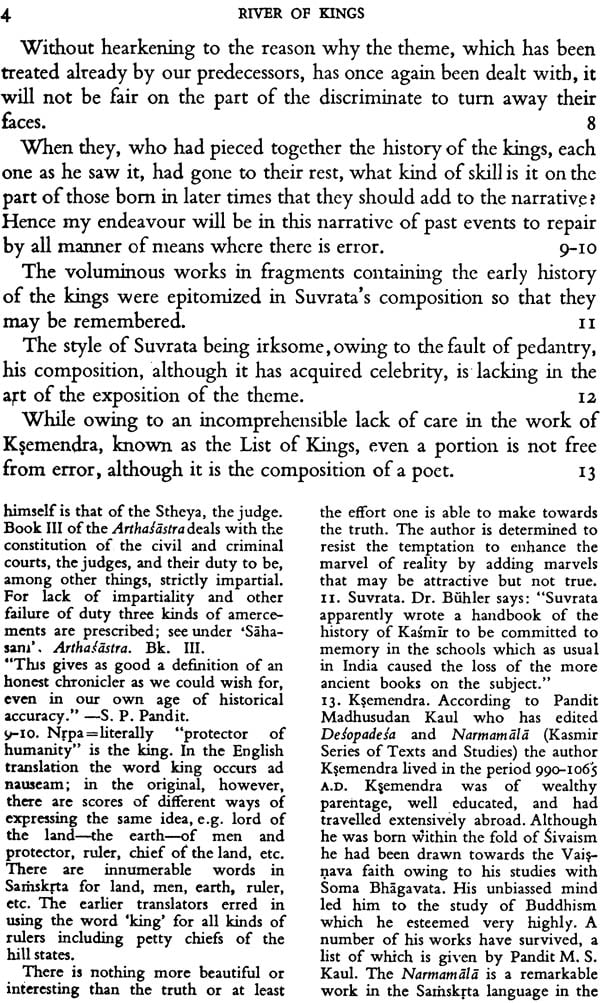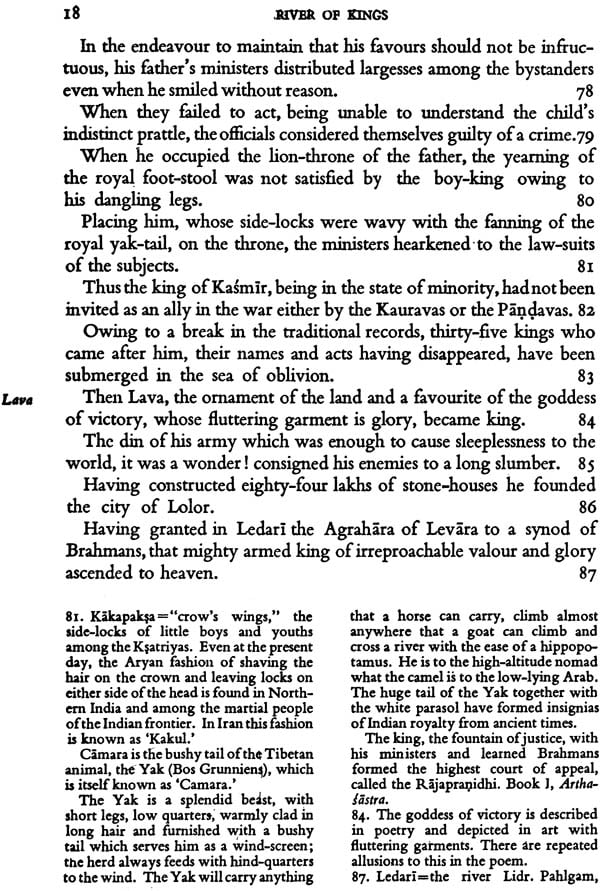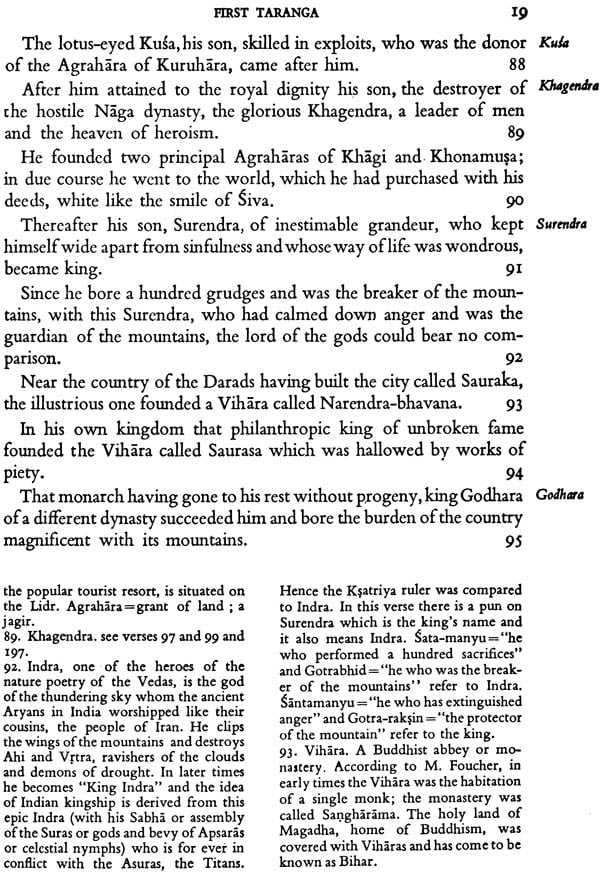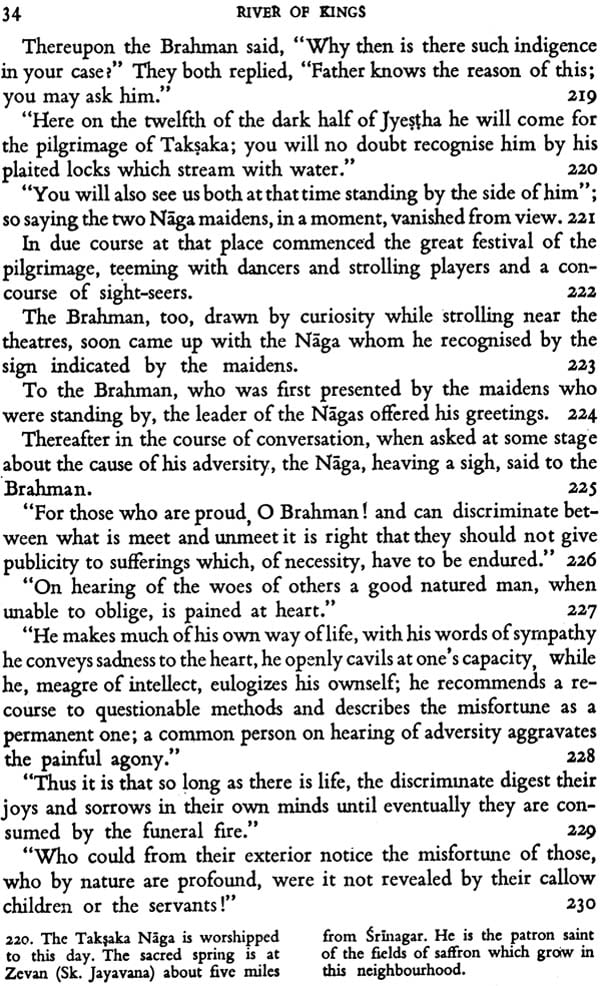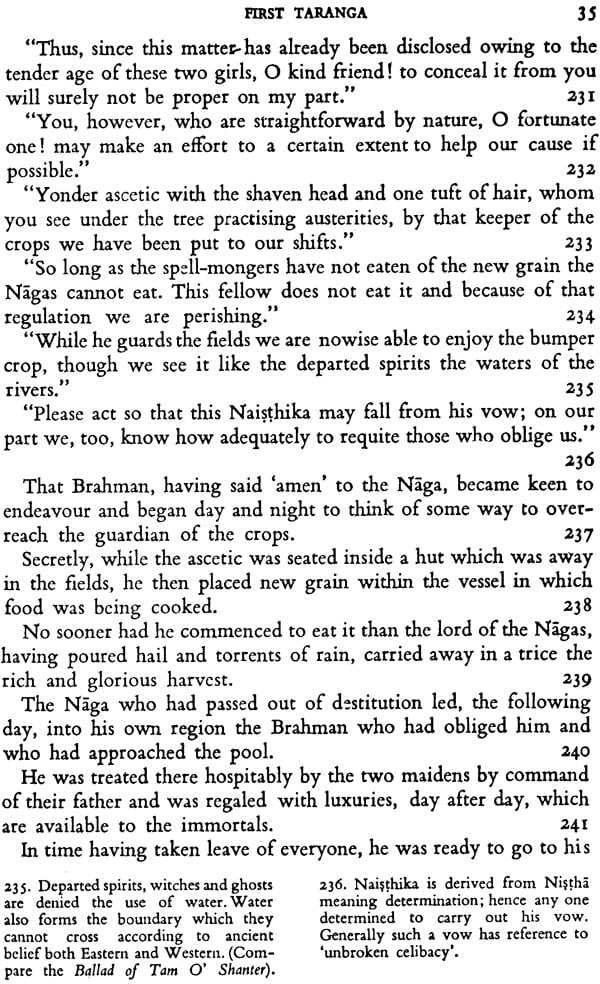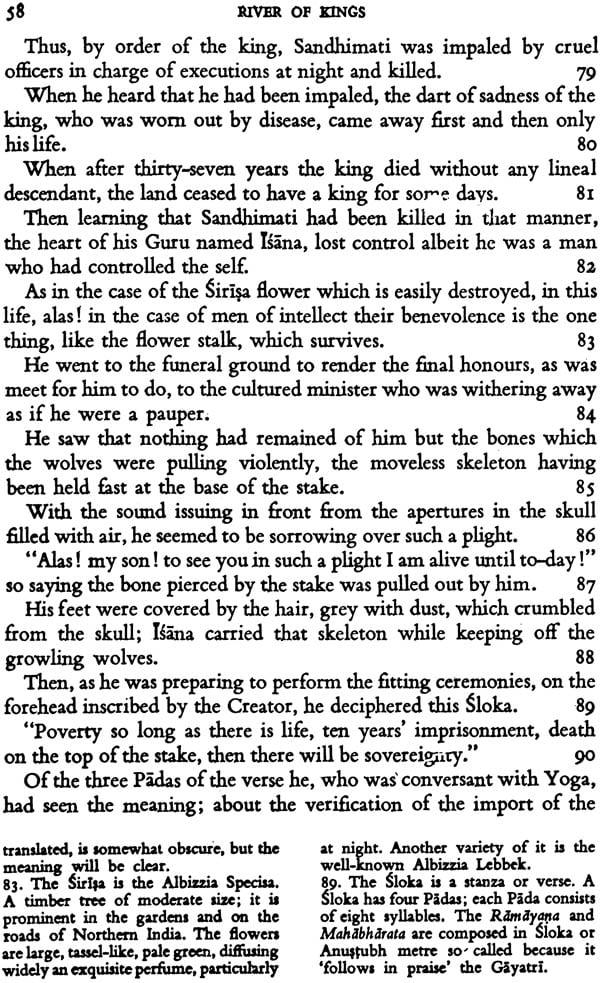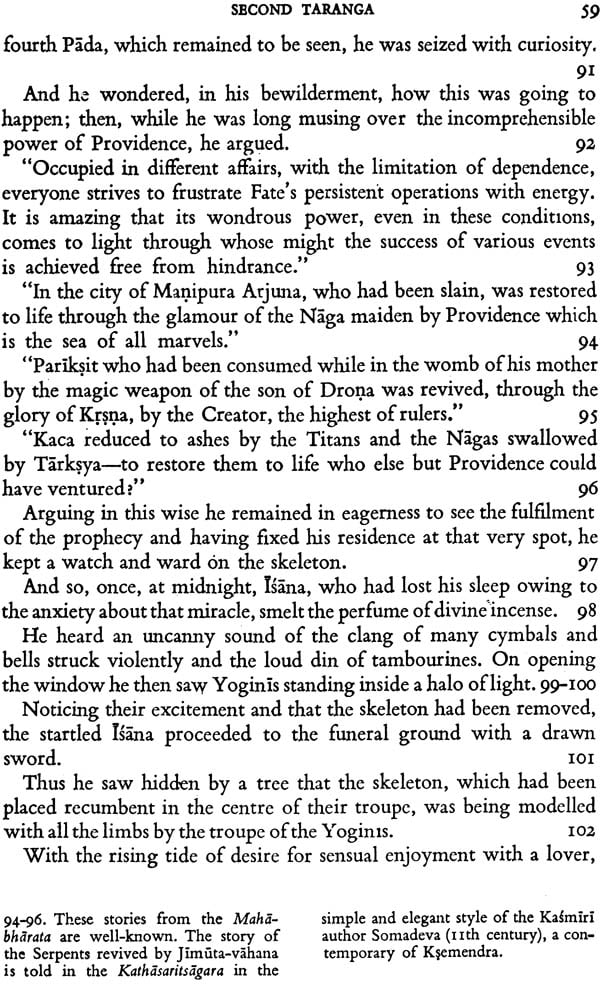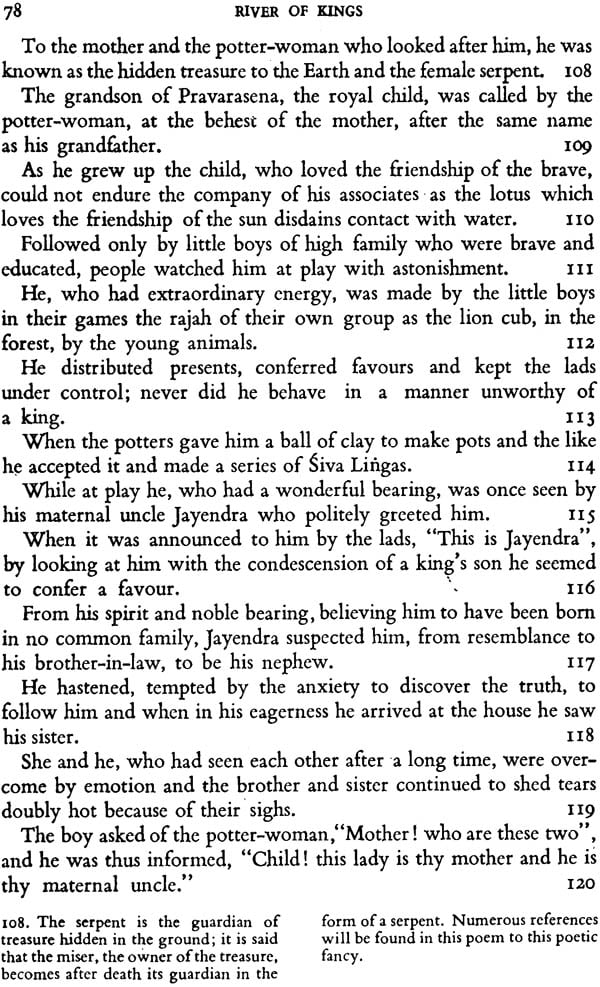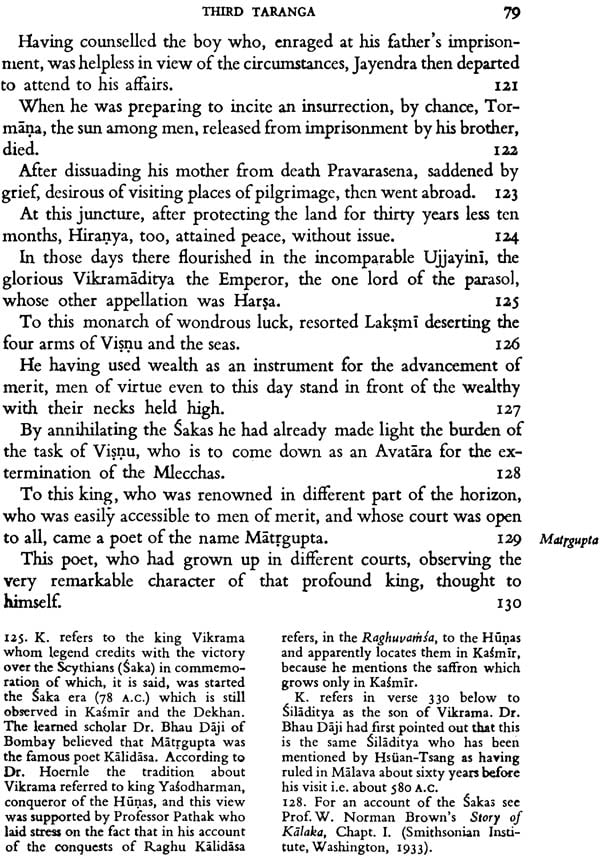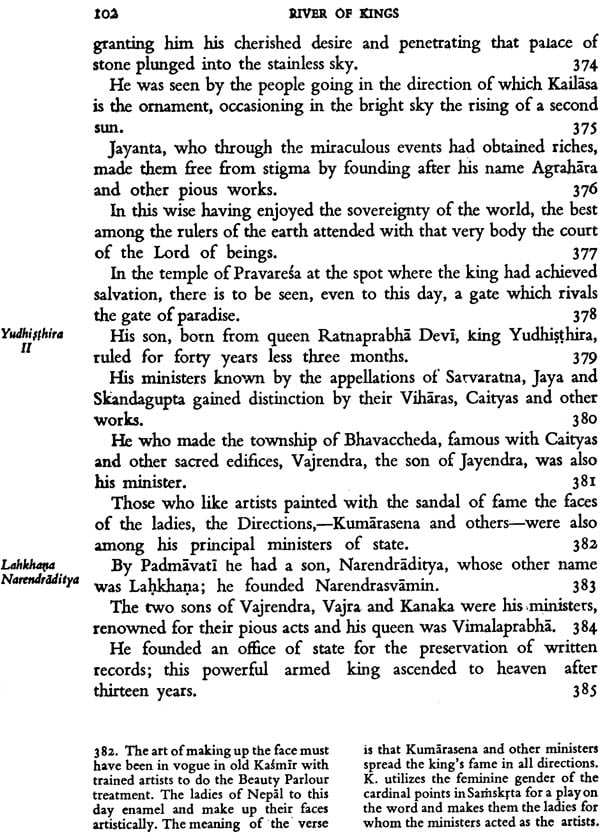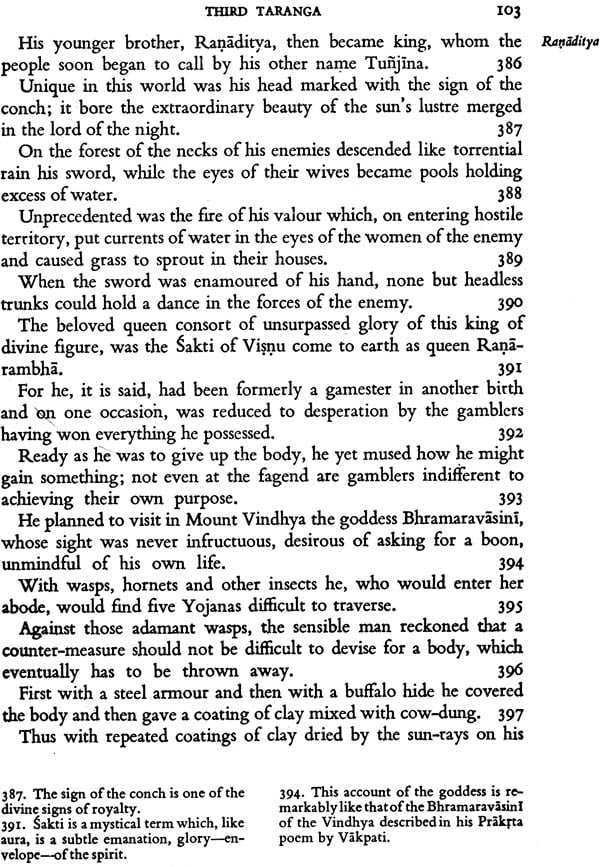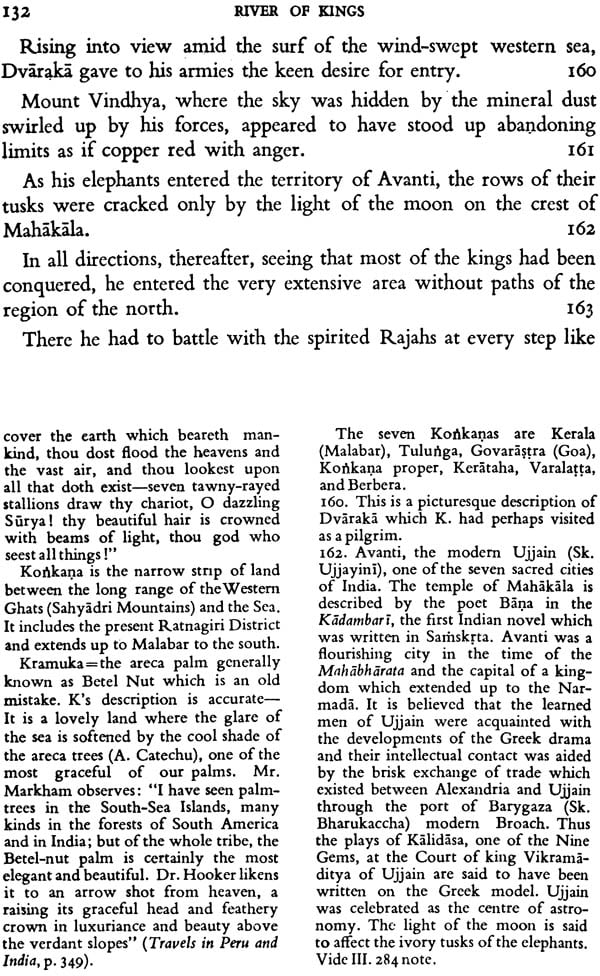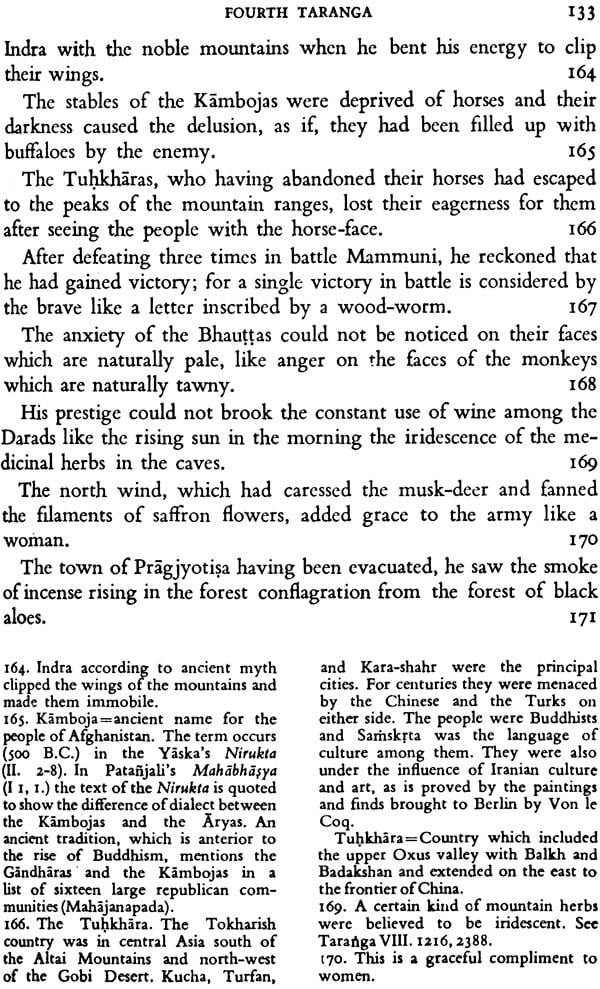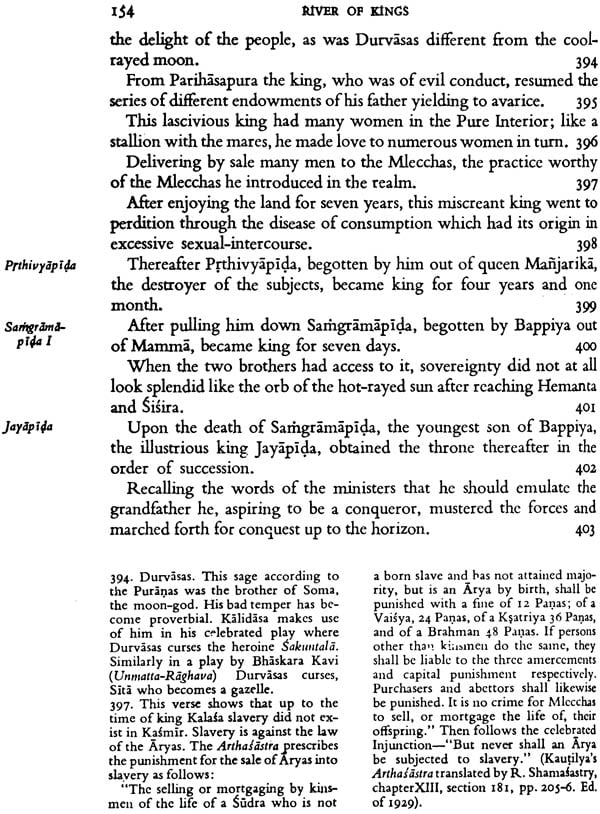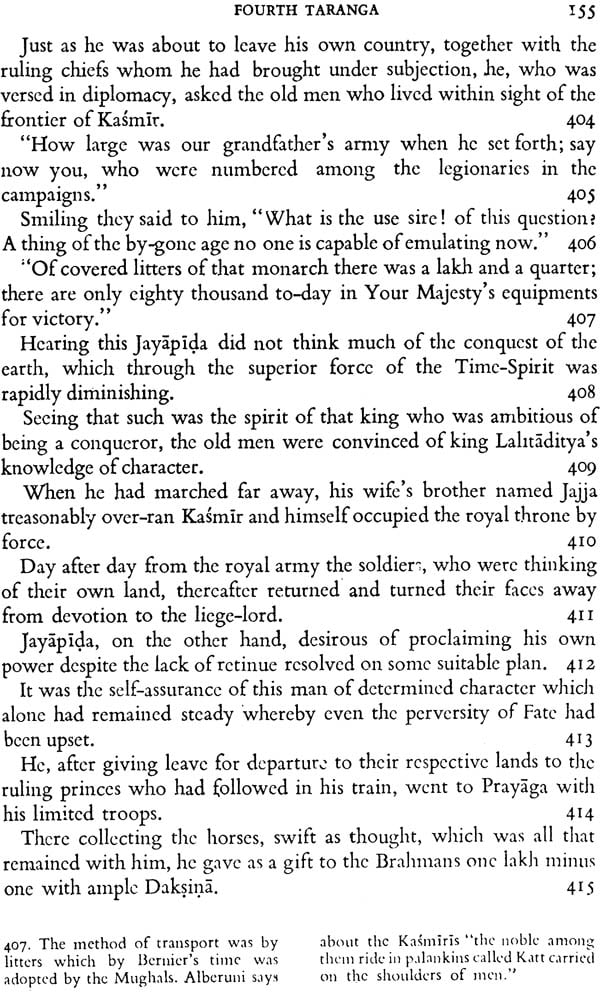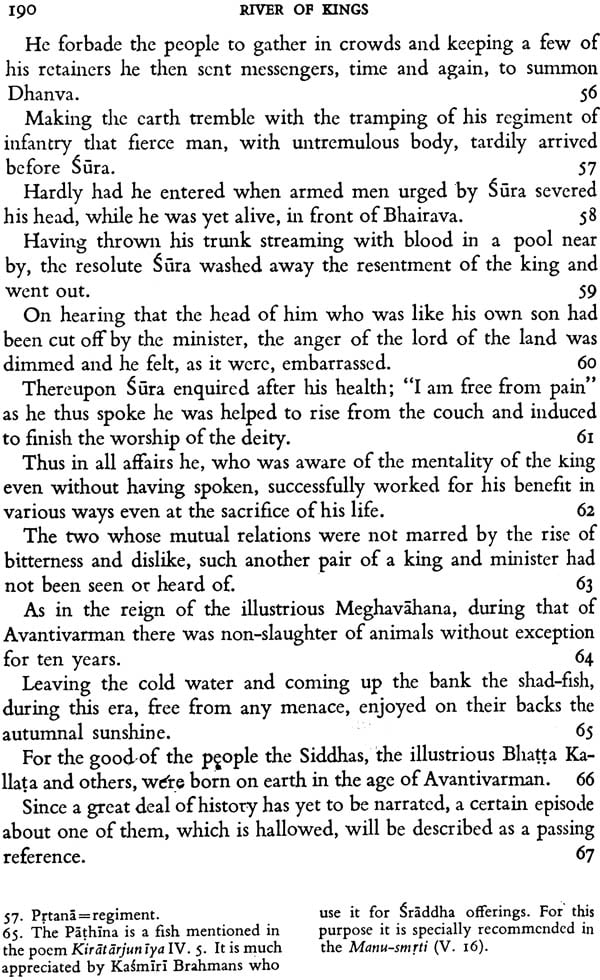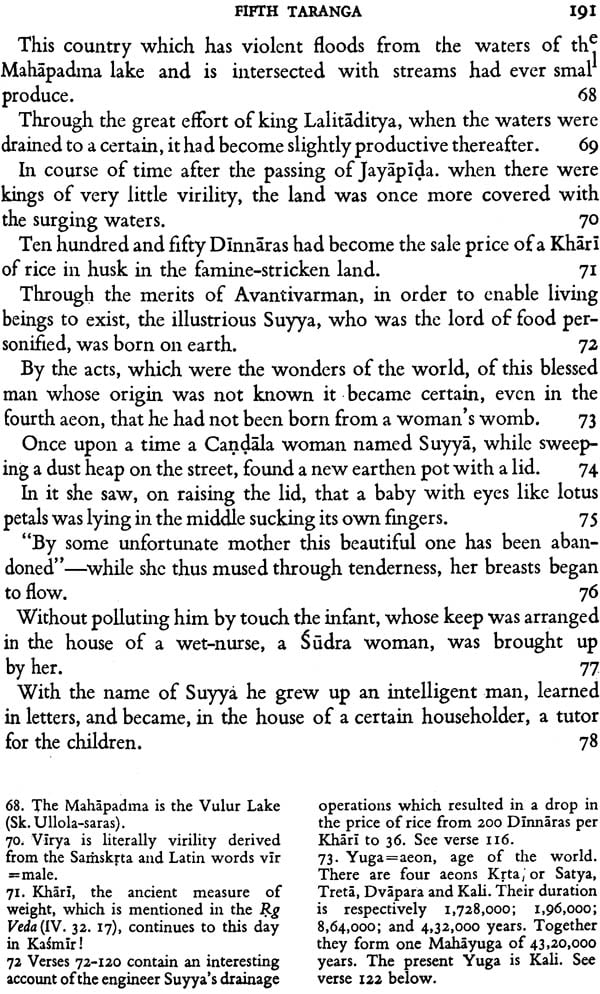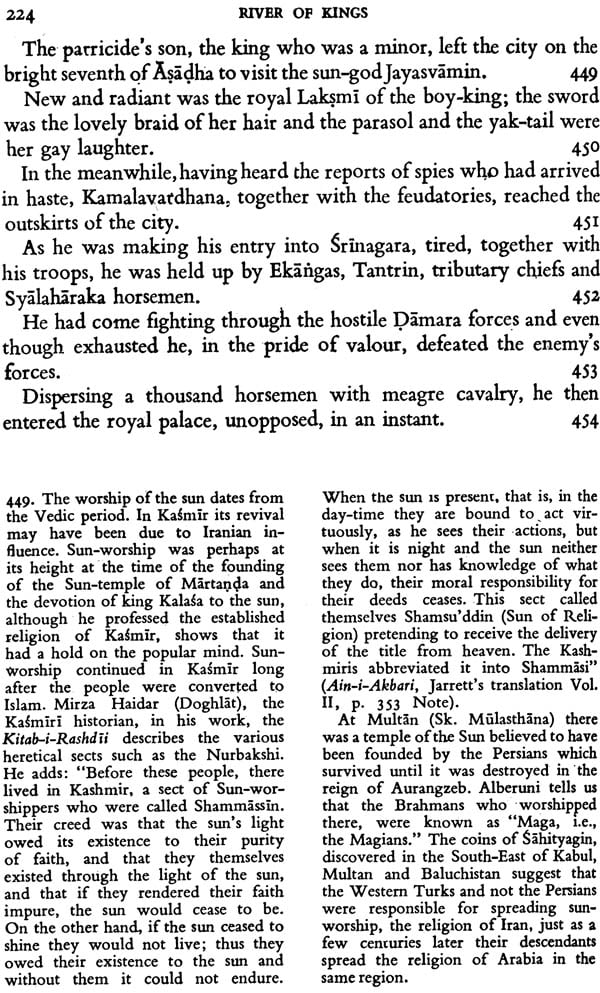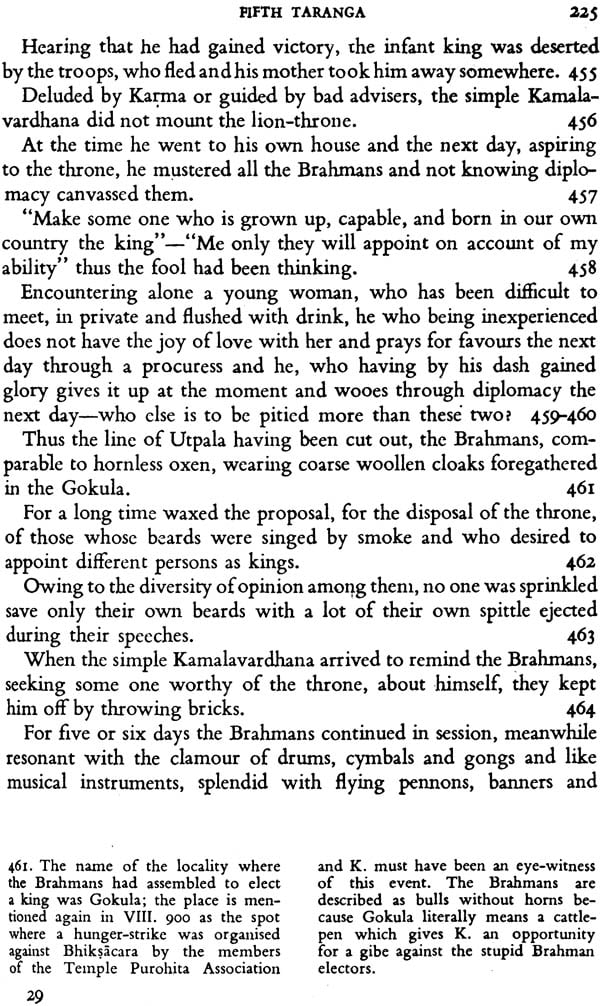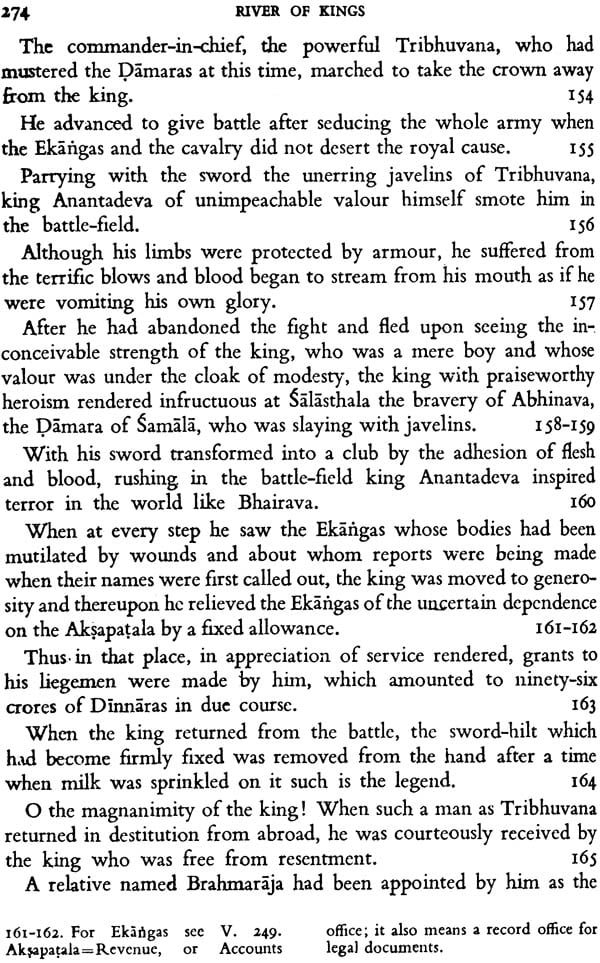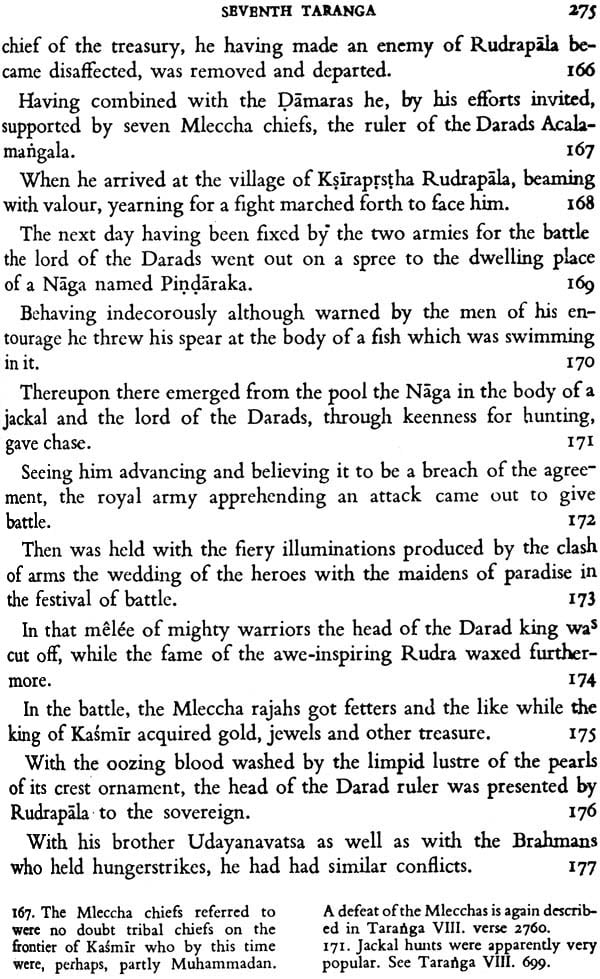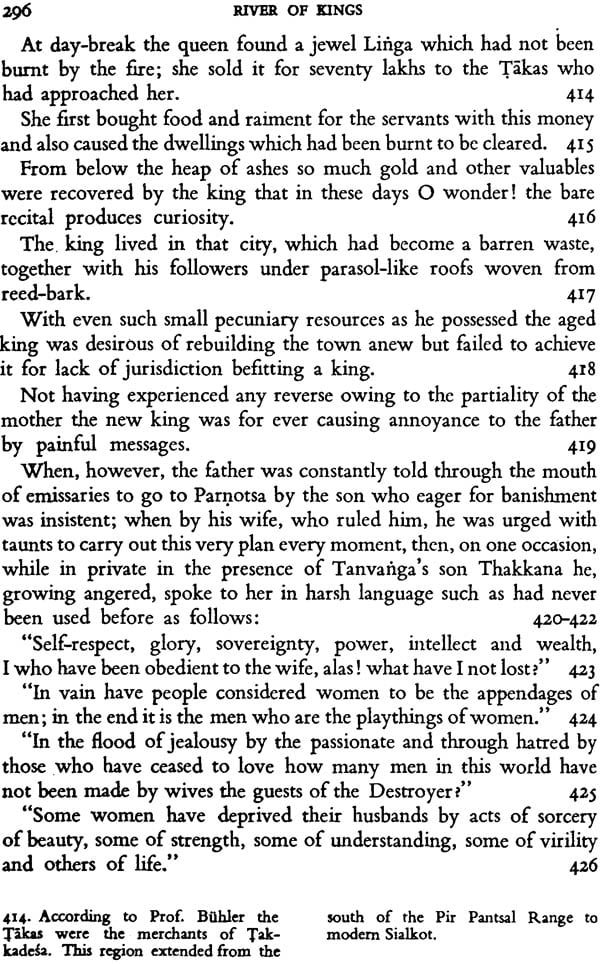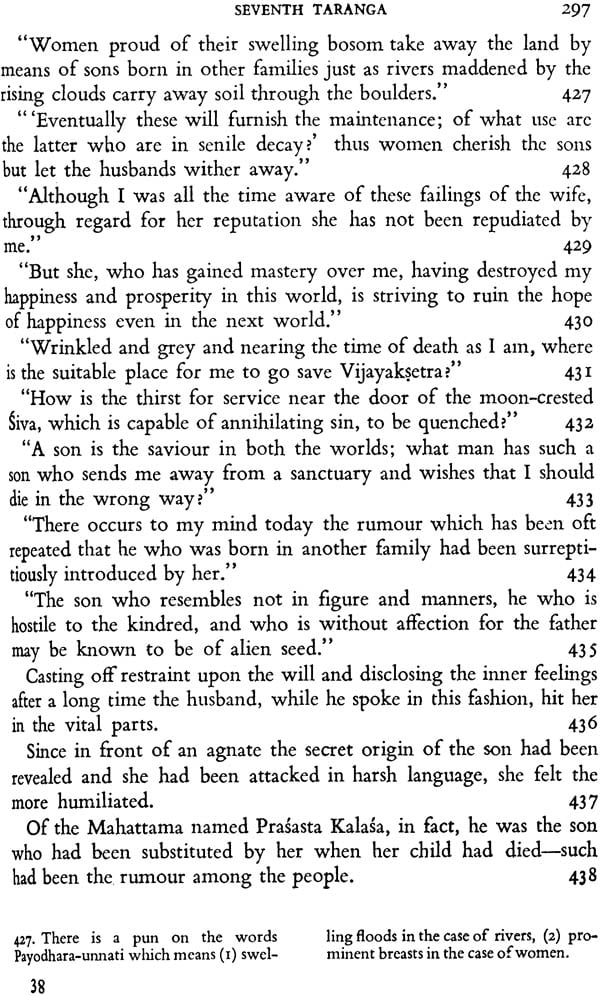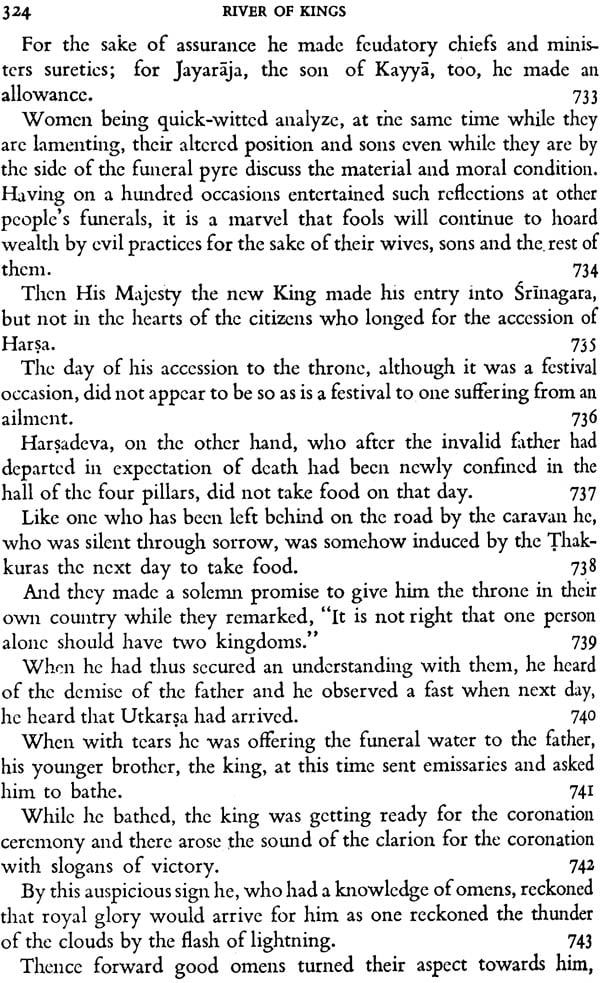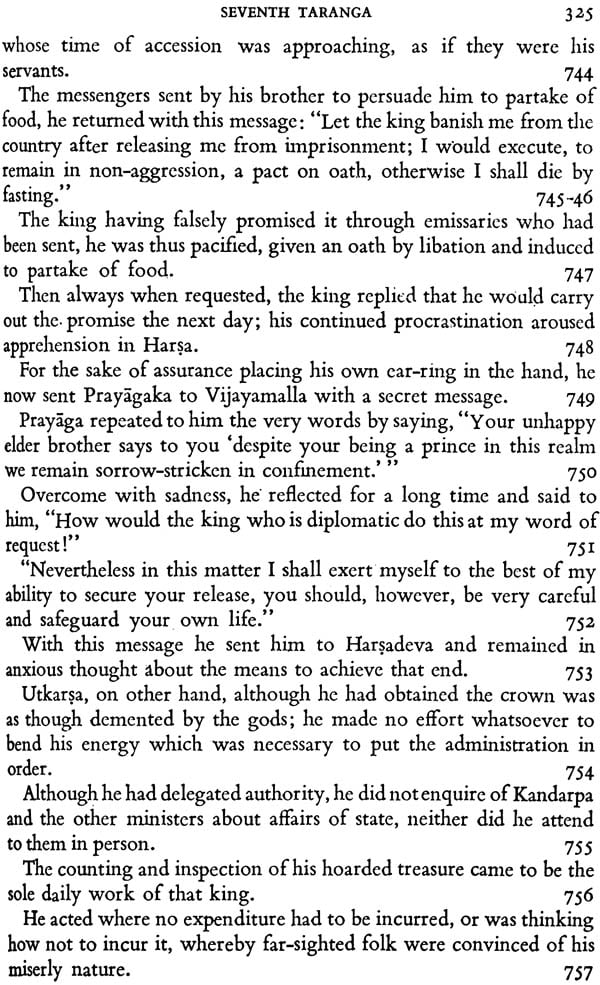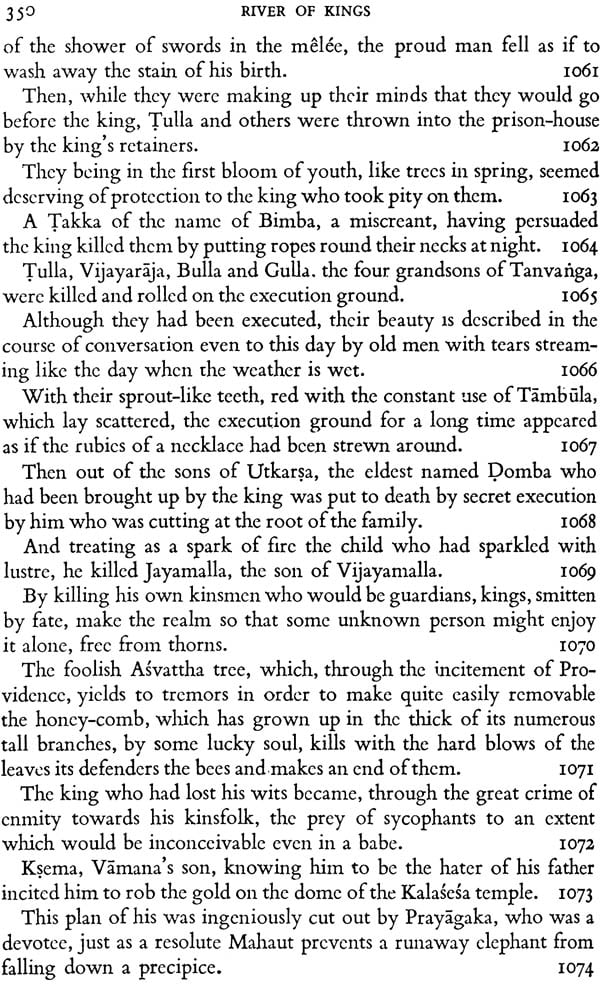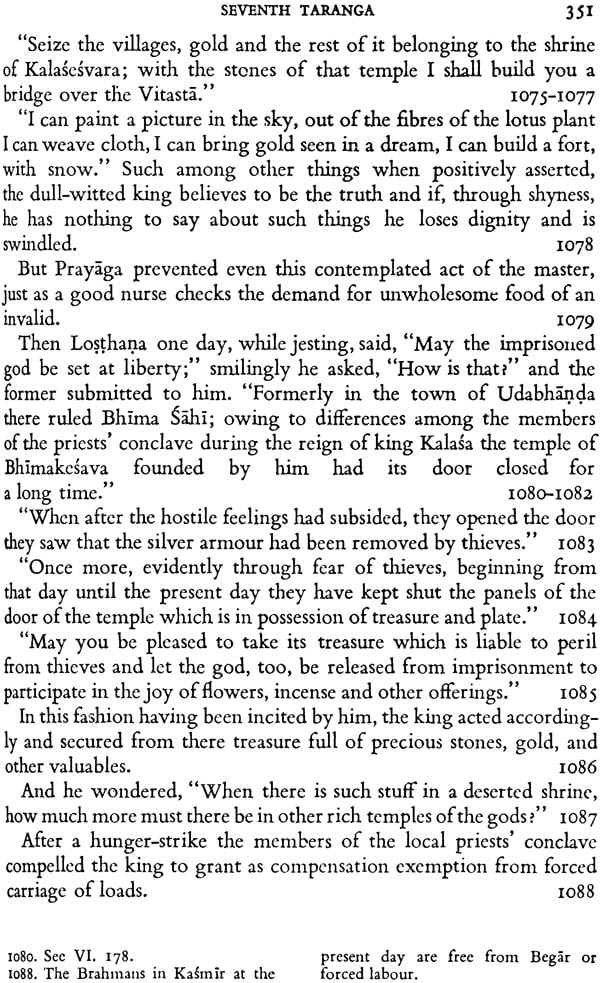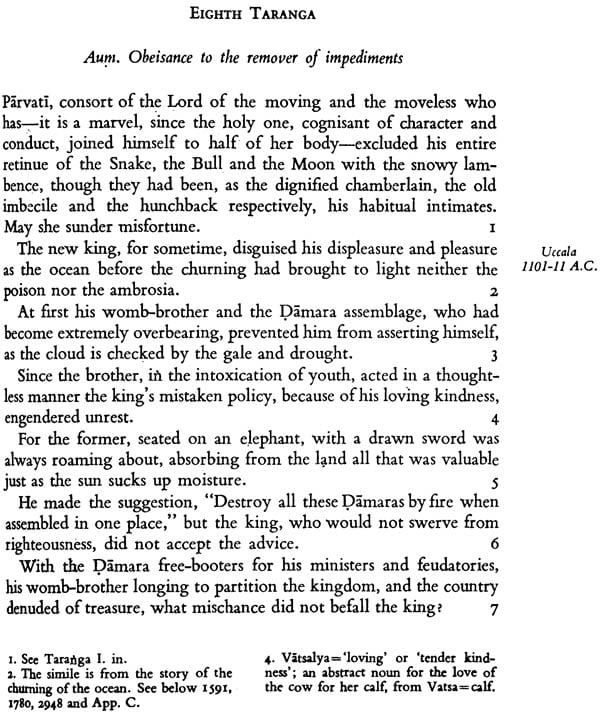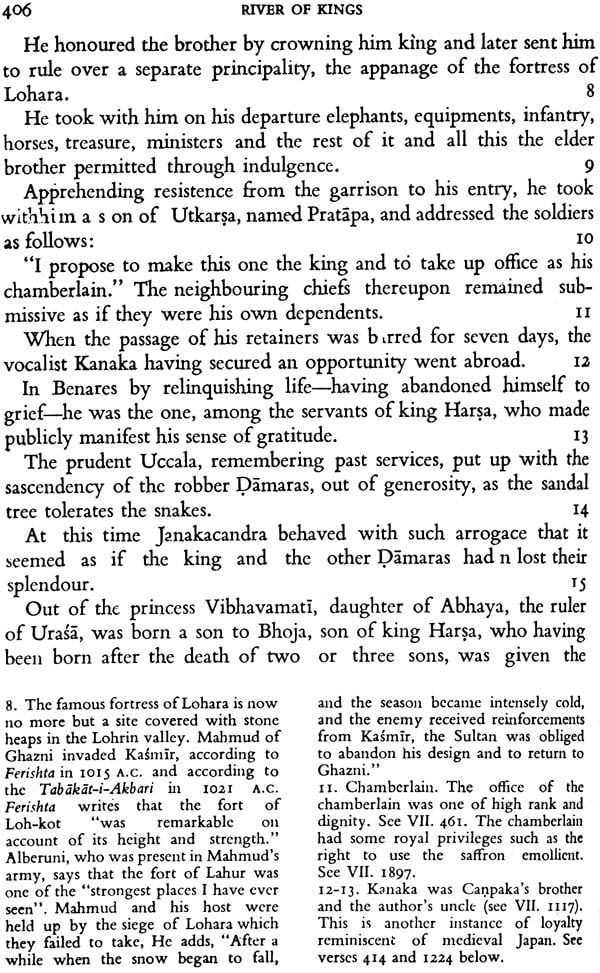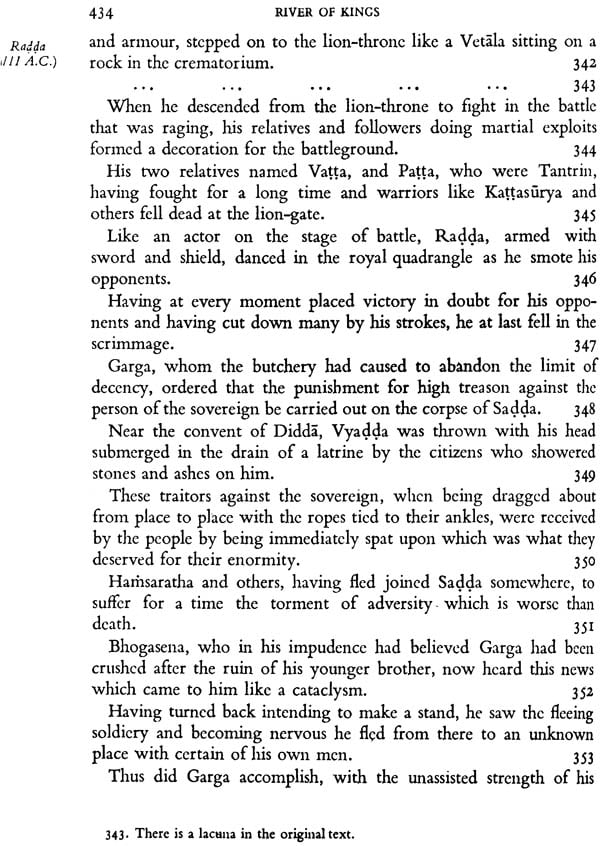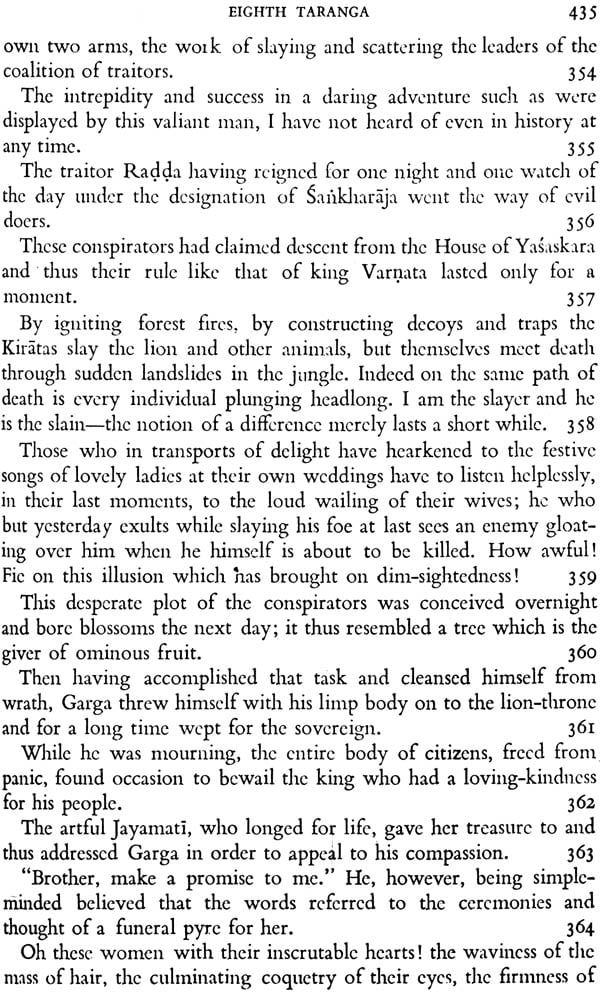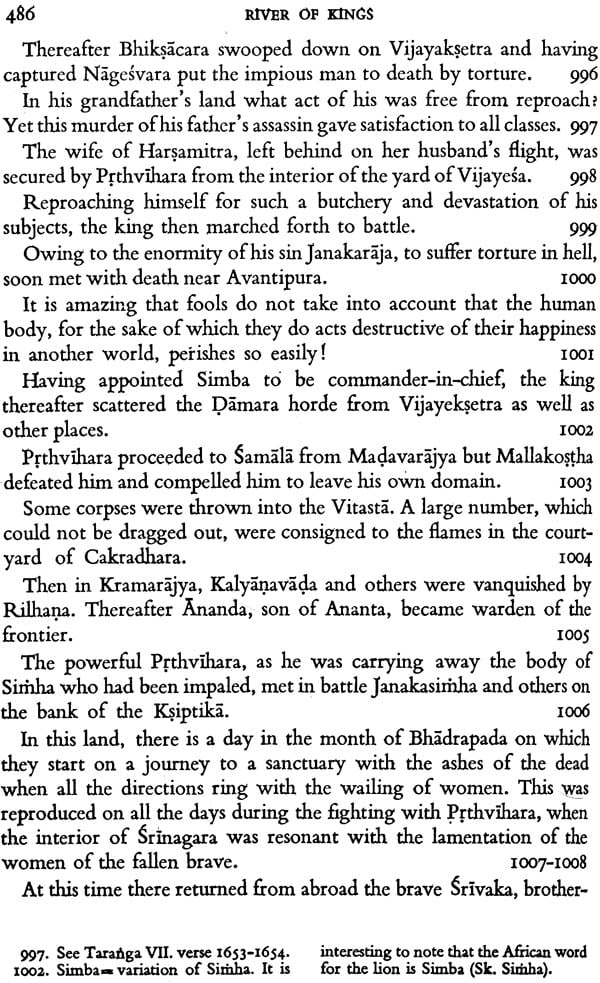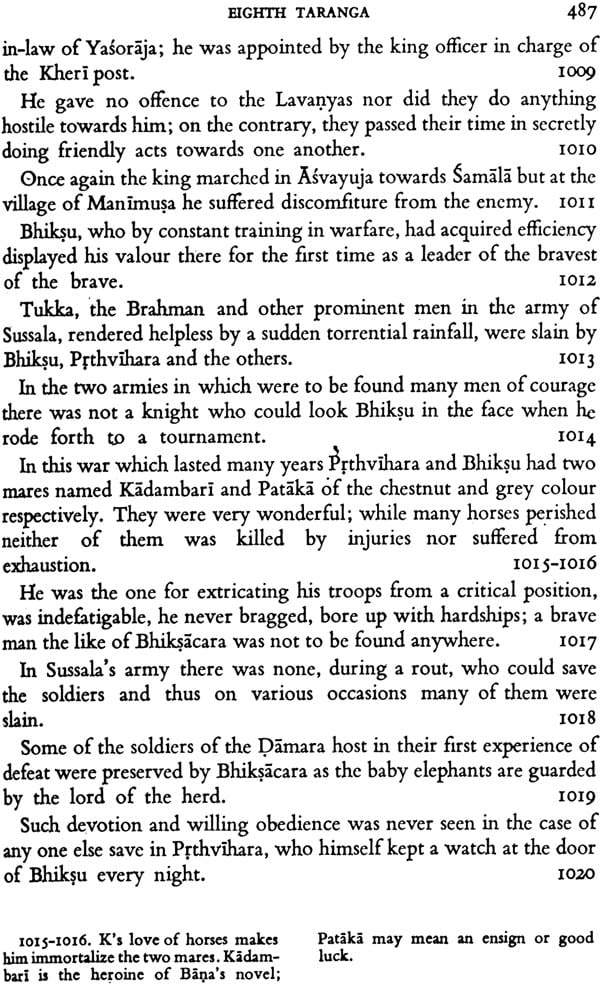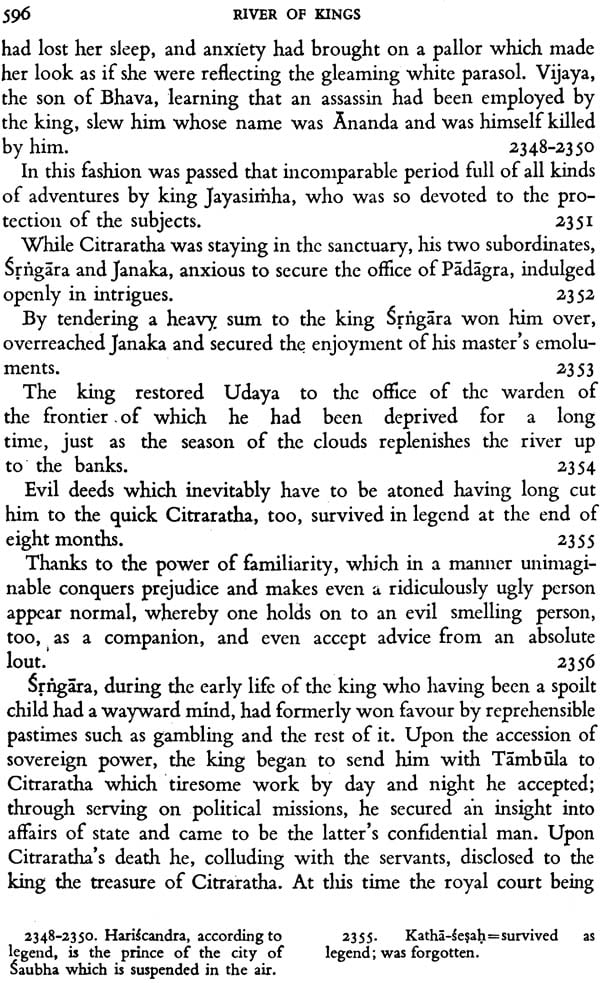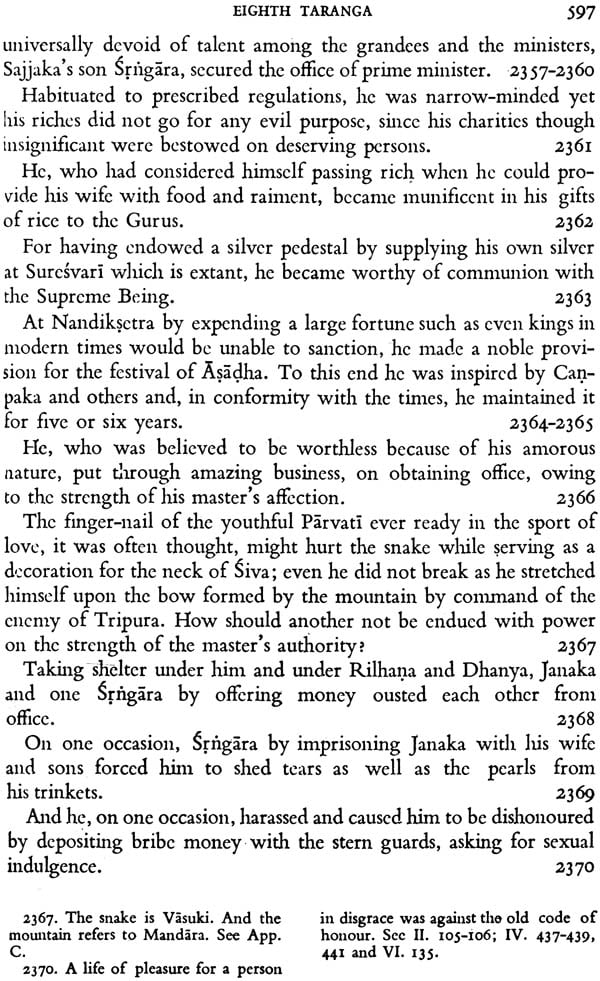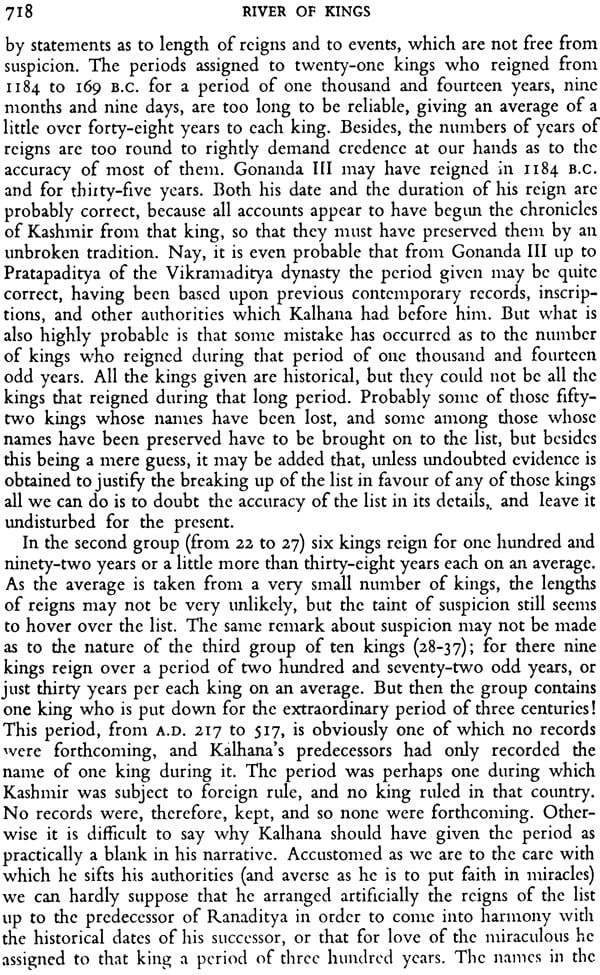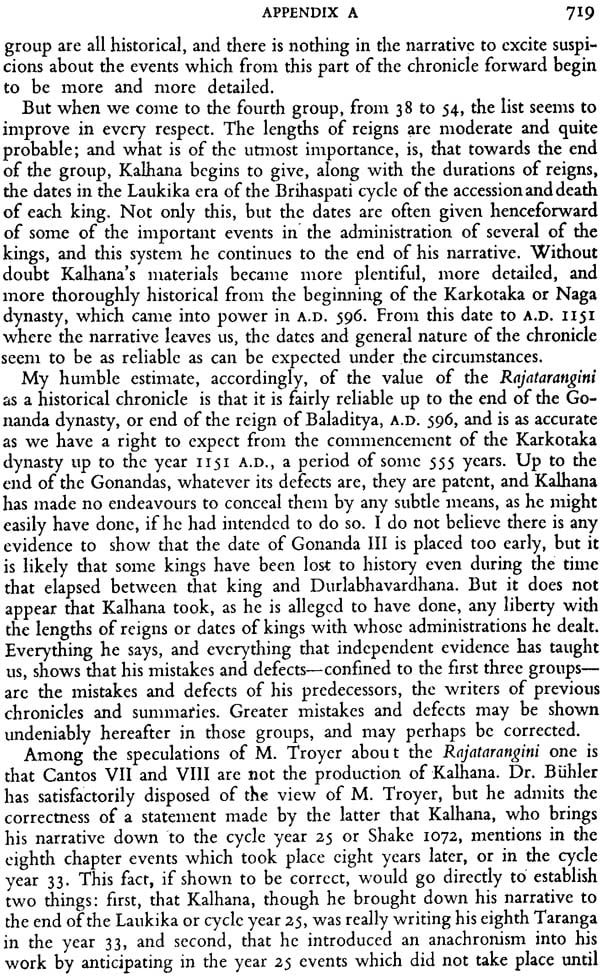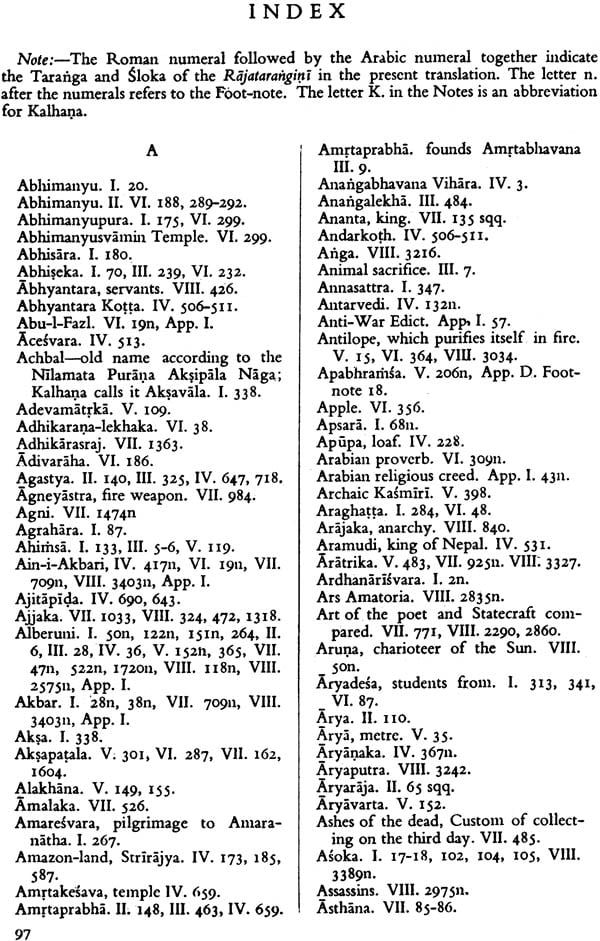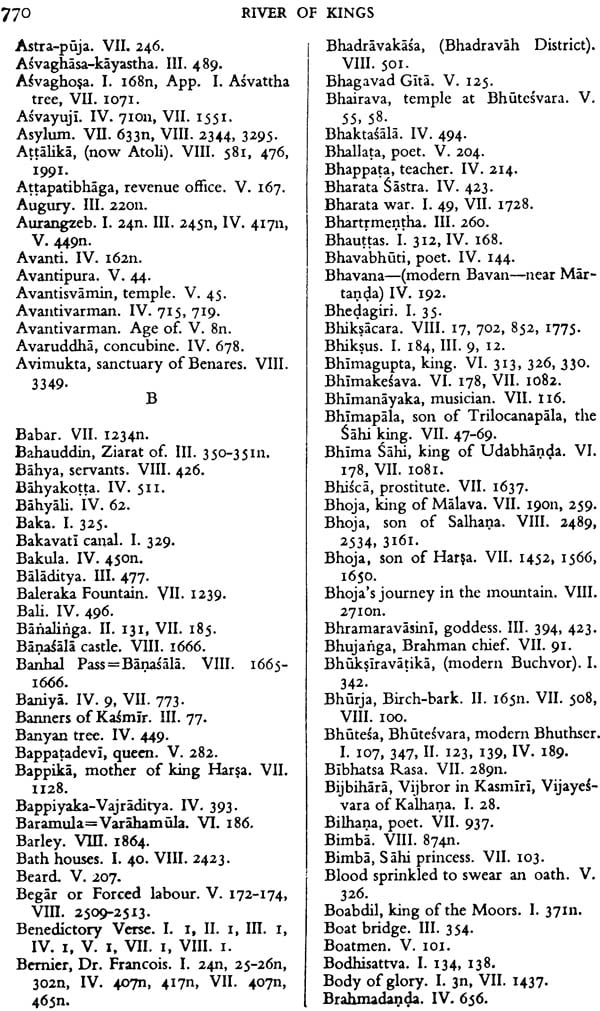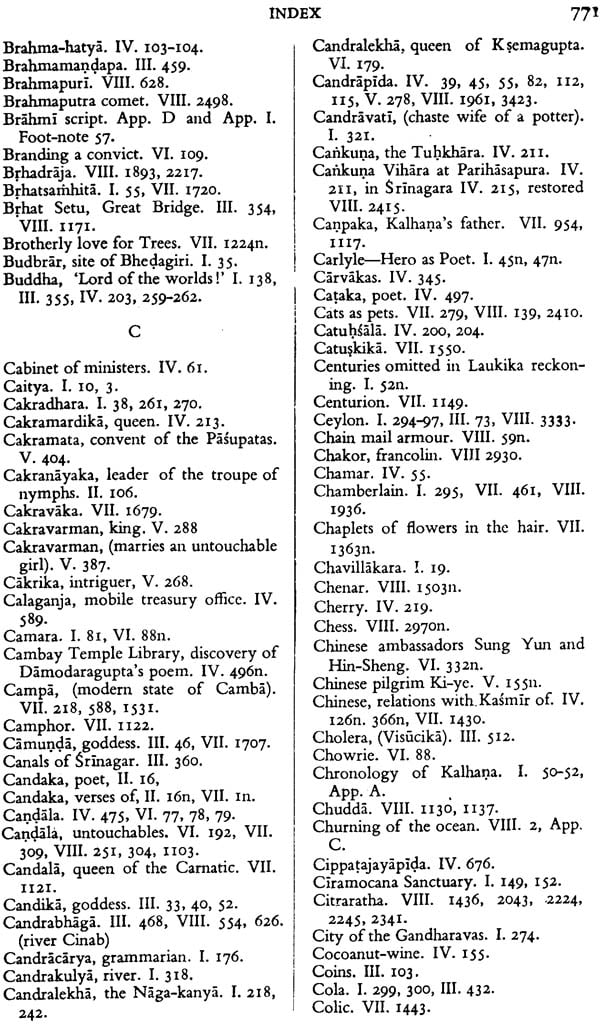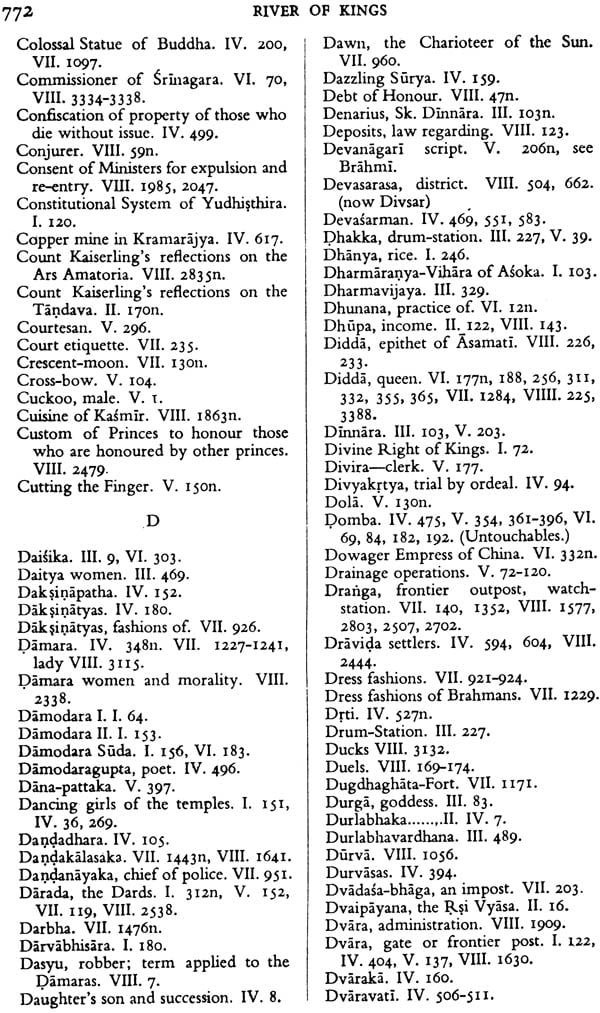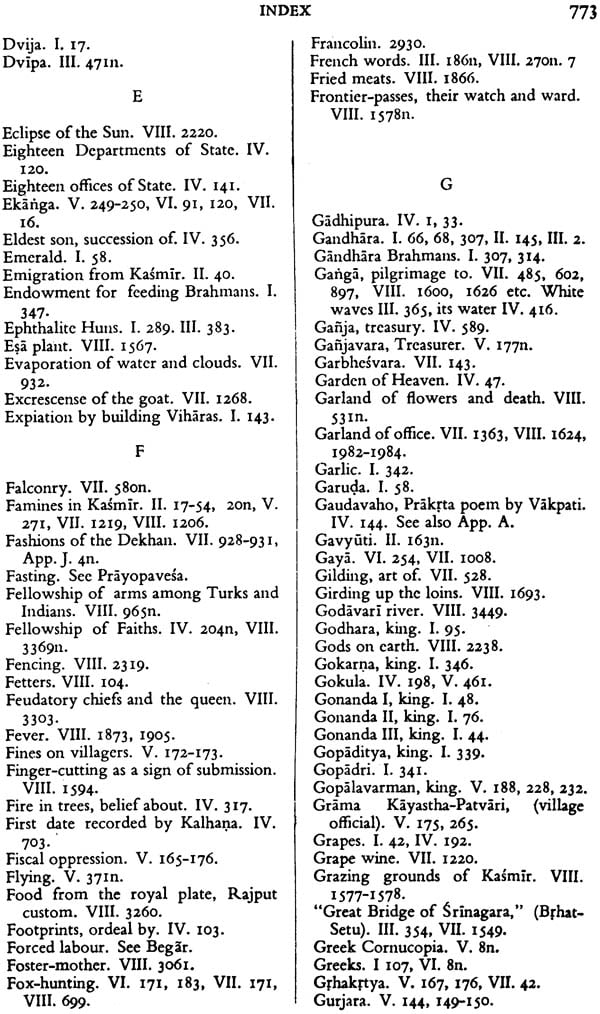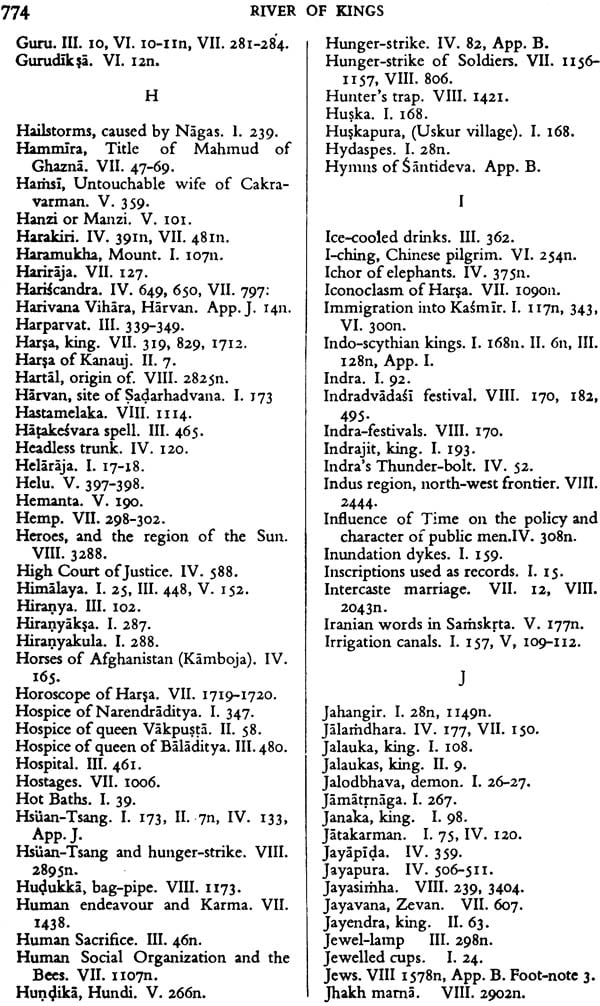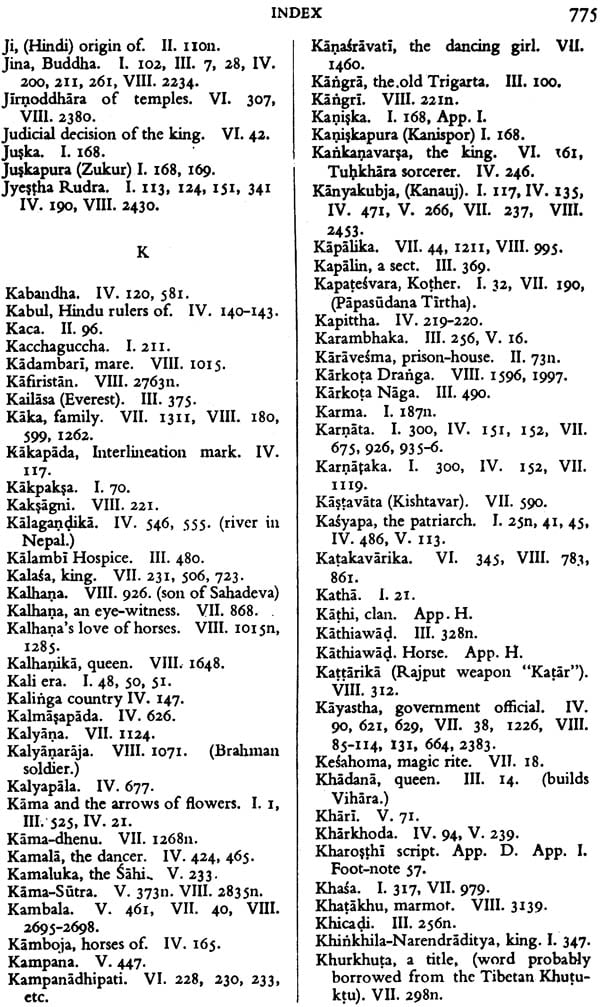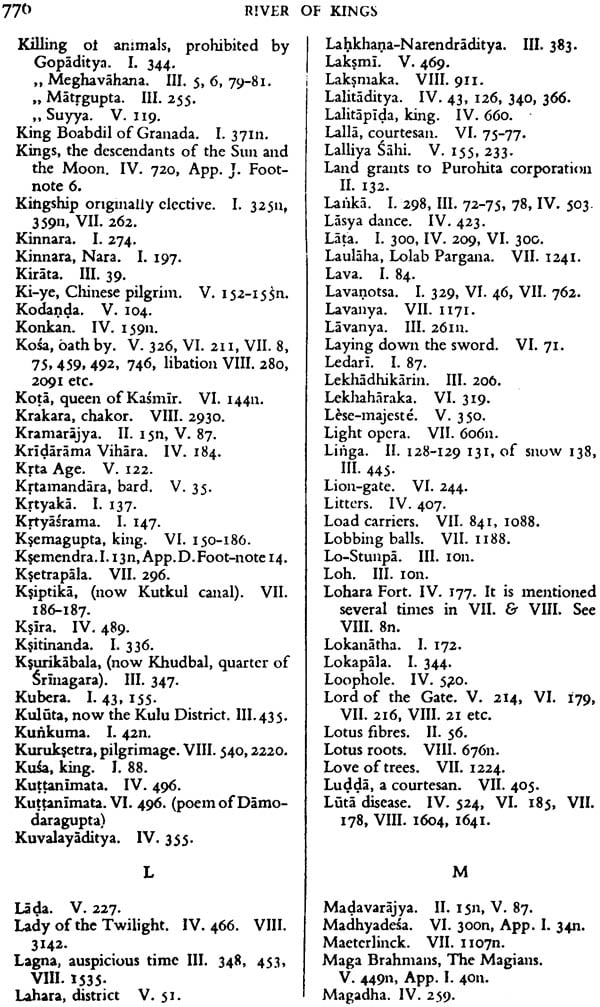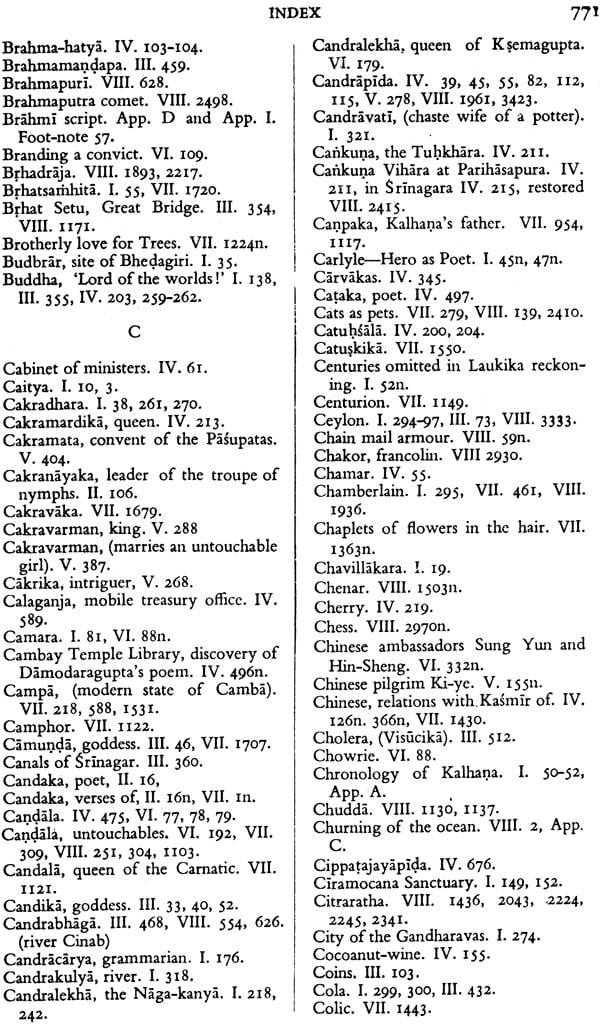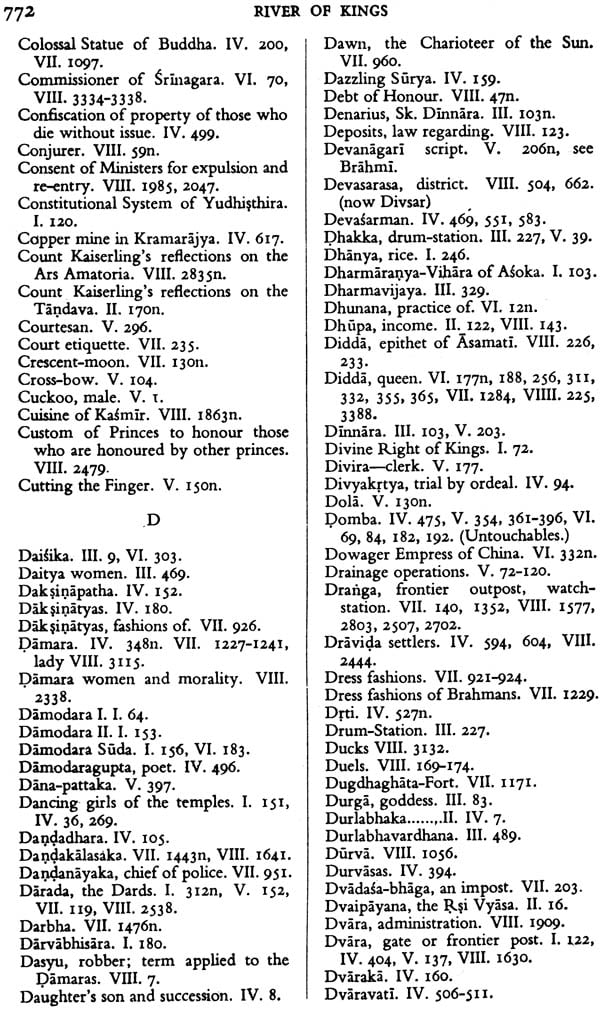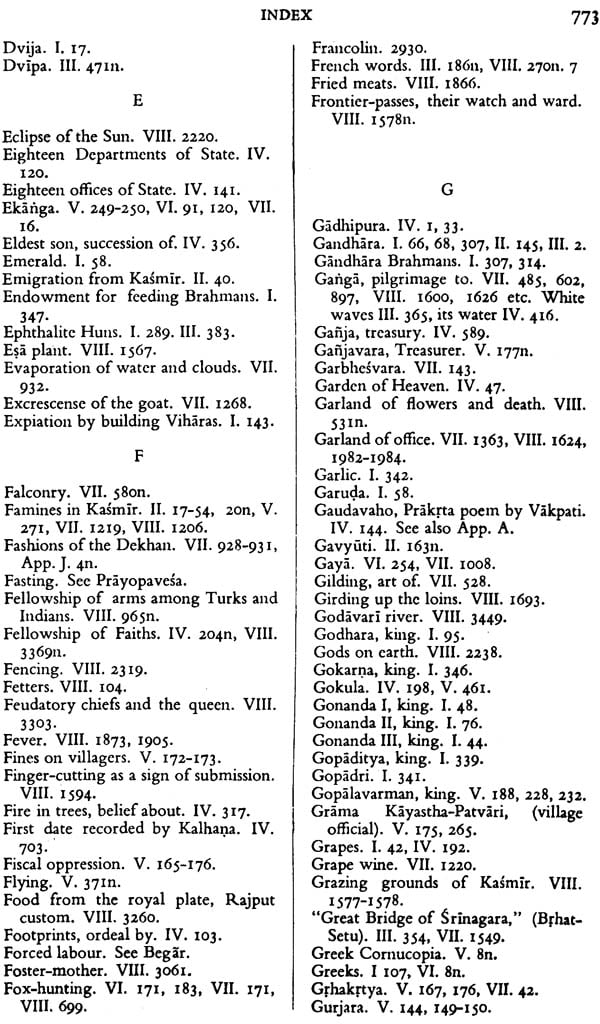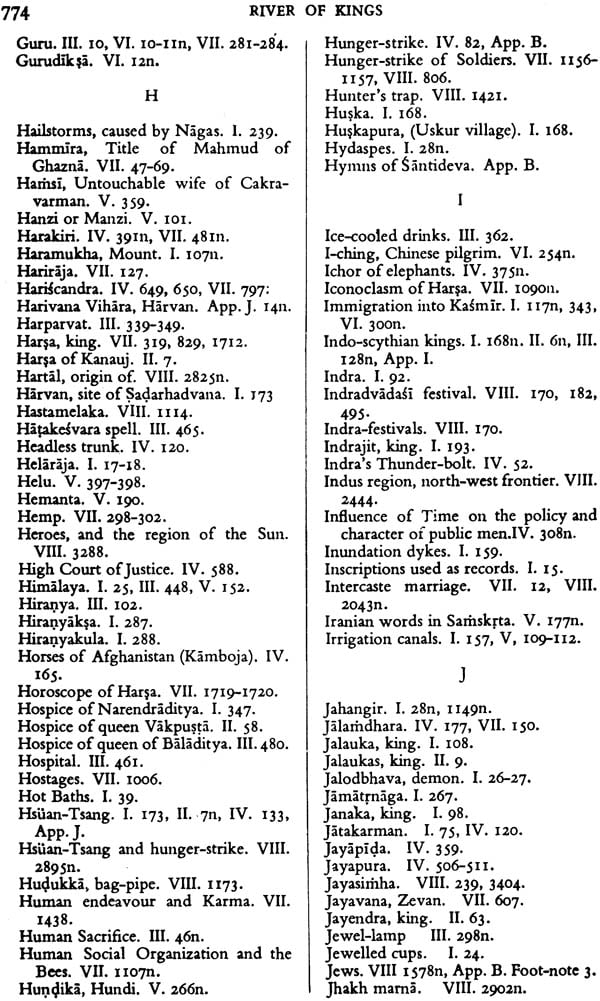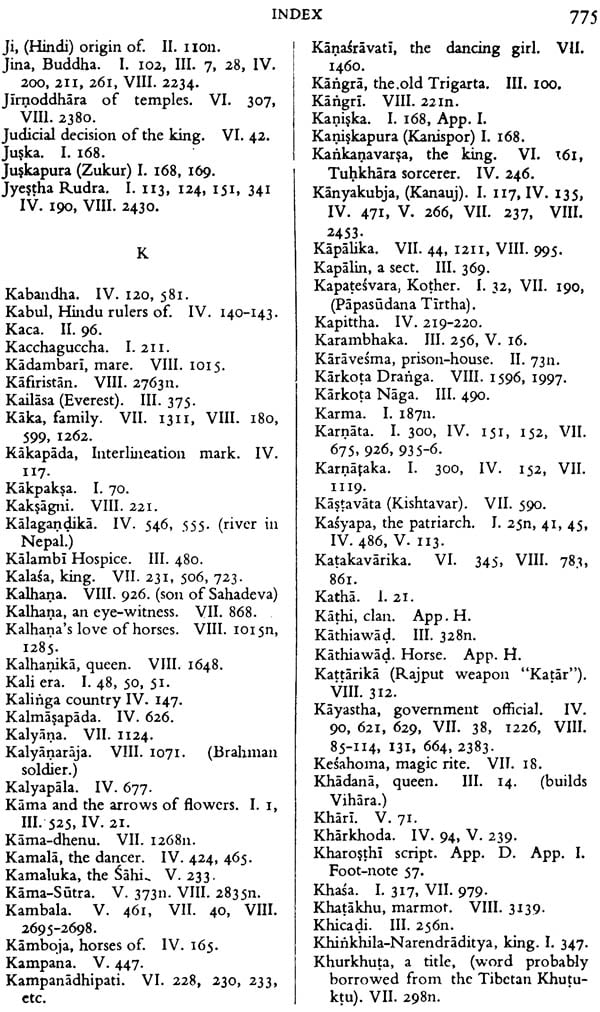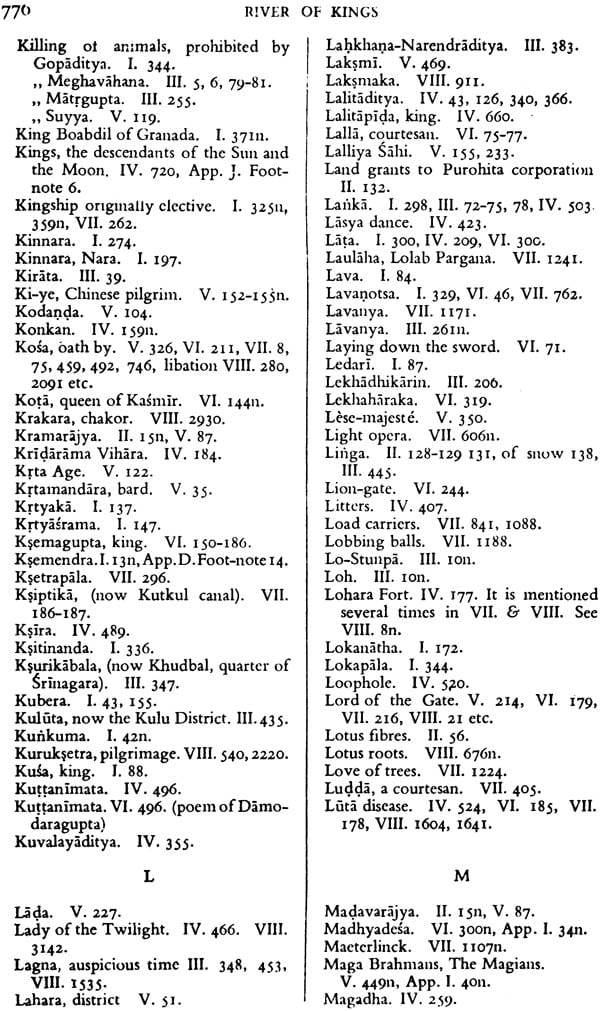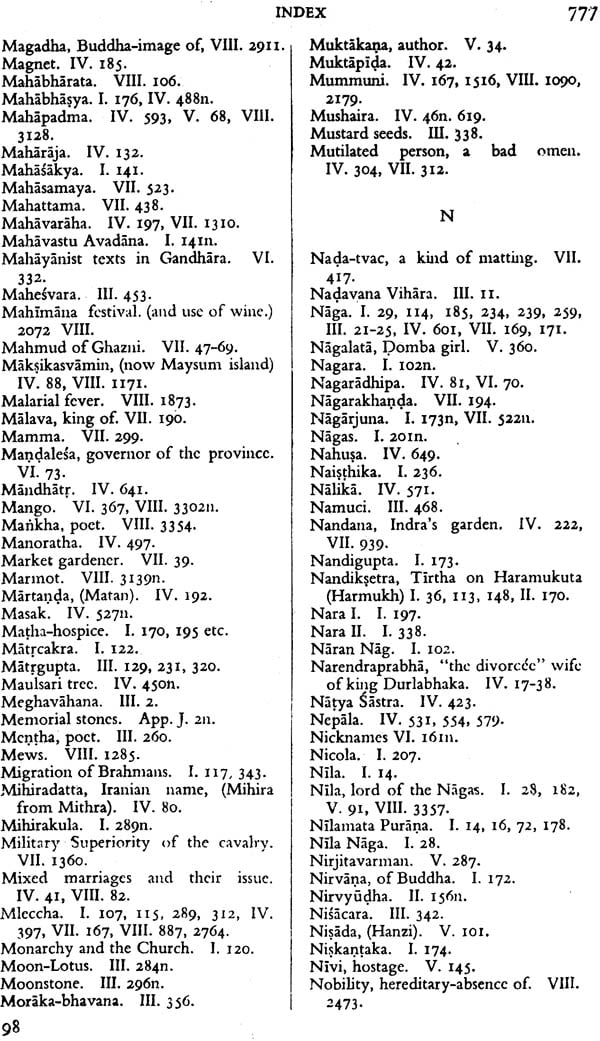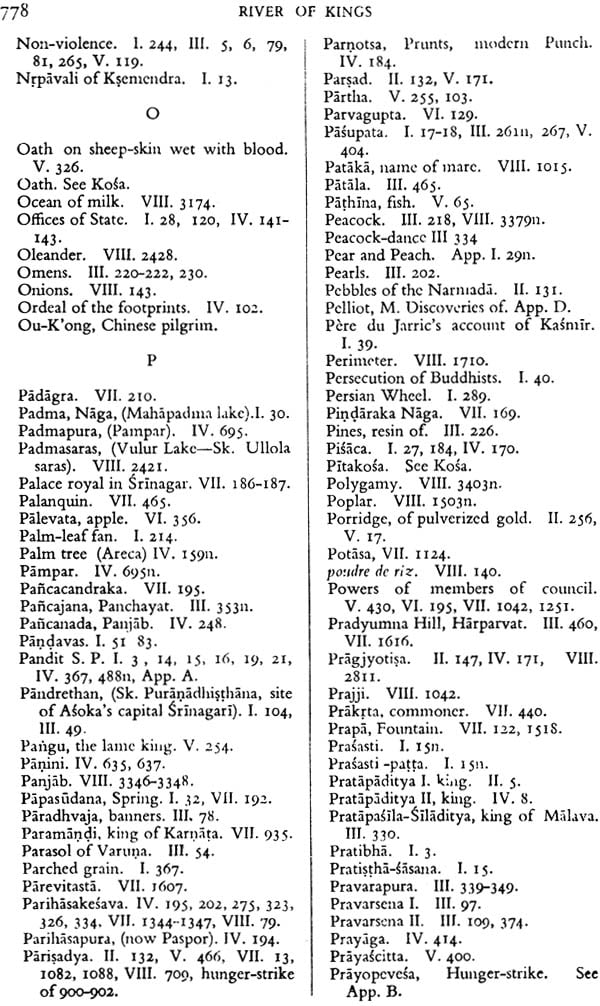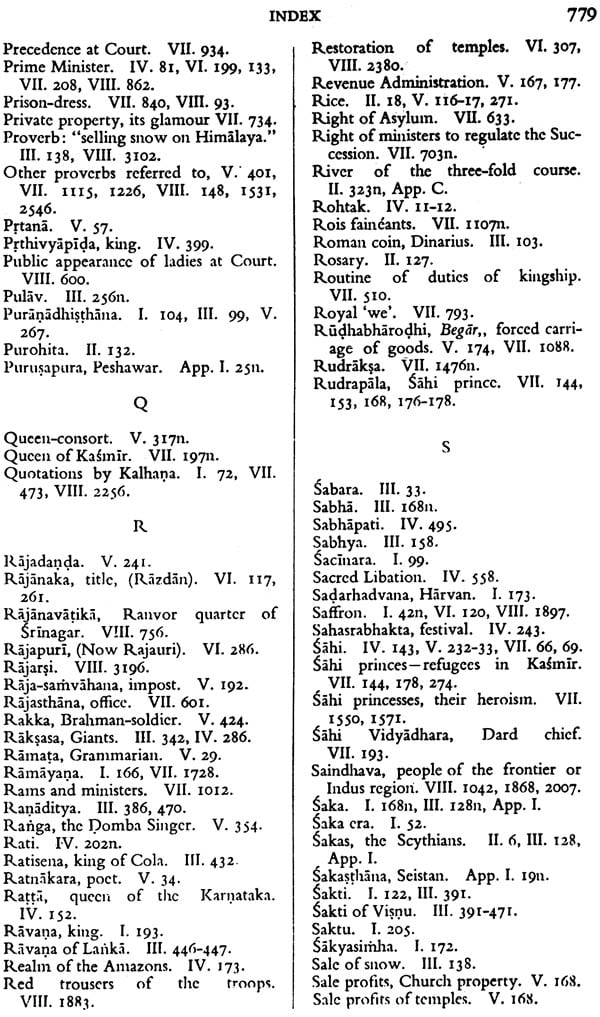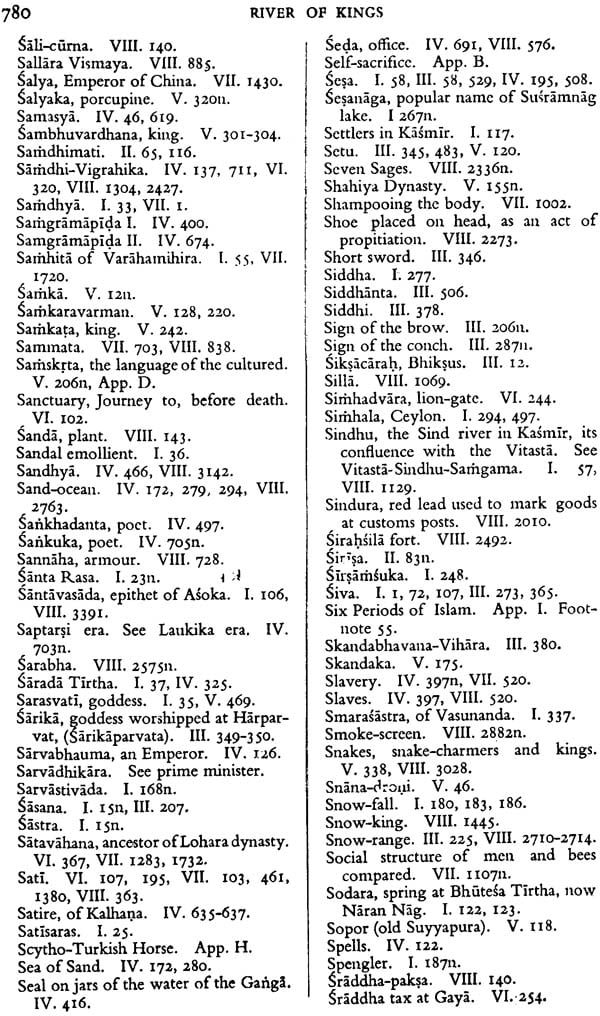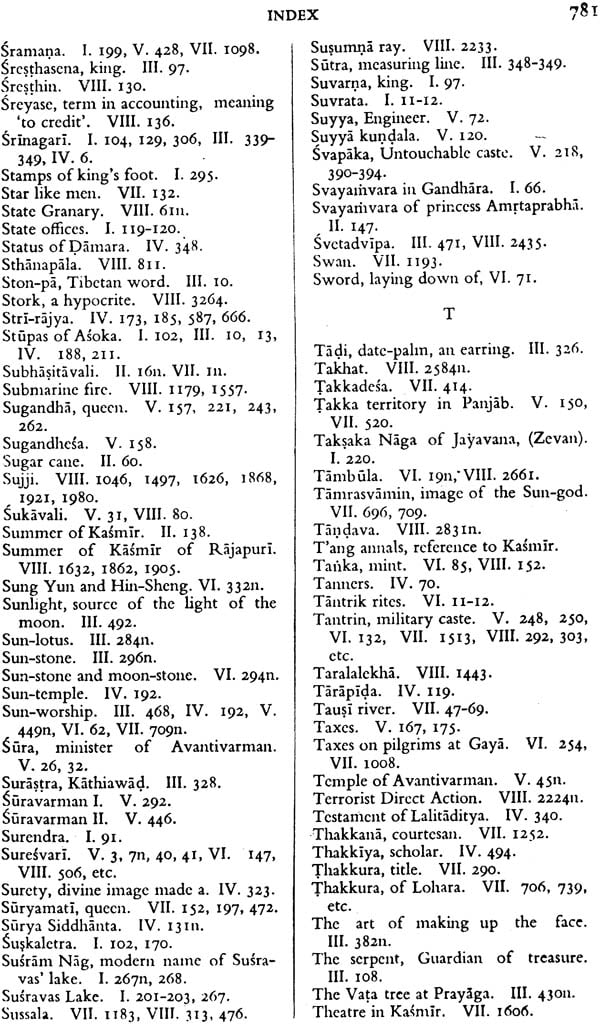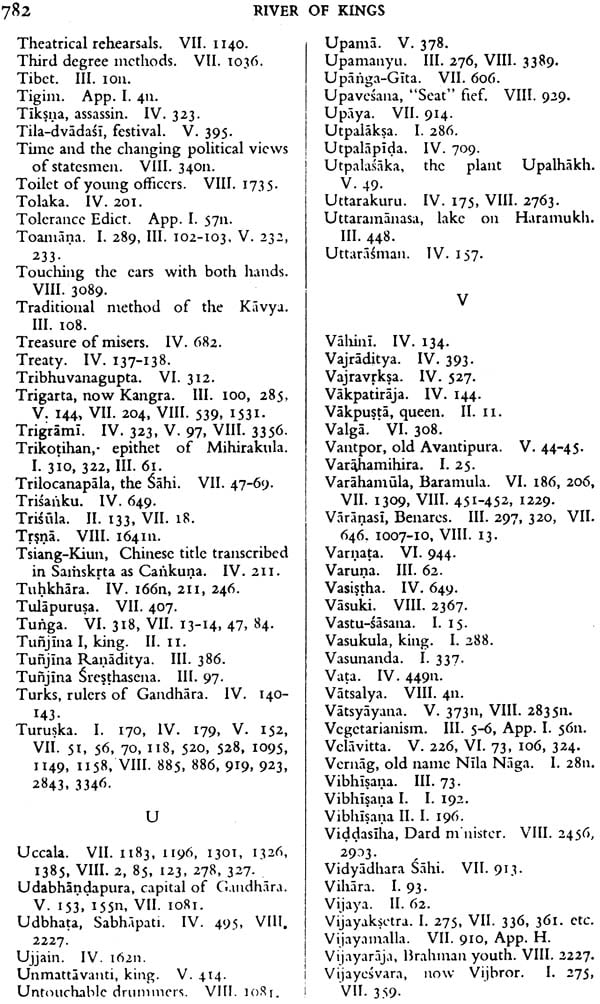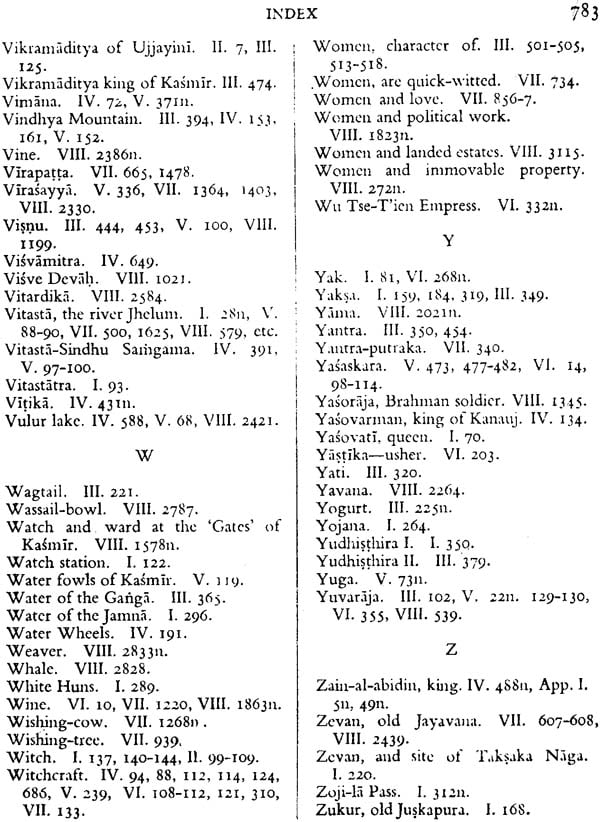
RAJATARANGINI: The Saga of the Kings of Kasmir
Book Specification
| Item Code: | IDD937 |
| Author: | Translated by Ranjit Sitaram Pandit |
| Publisher: | SAHITYA AKADEMI, DELHI |
| Language: | Translated from the original Samskrta and entitled the River of Kings with an Introduction, Annotati |
| Edition: | 2009 |
| ISBN: | 9788126012366 |
| Pages: | 824 |
| Cover: | Hardcover |
| Other Details | 9.8" X 6.8" |
| Weight | 1.46 kg |
Book Description
About The Book:
KALHANA's Rajatarangini is not only a classic of Sanskrit narrative poetry but is the earliest extant history of Kashmir. Written in the middle of the 12th century, in the age when the crusaders of Europe Were fighting in Western Asia, Kalhana's masterpiece is a unique blend of authentic chronicle and imaginative poetry inspired by the poet's passionate love of his exquisitely beautiful homeland.
This famous English translation by R.S. Pandit was first published in 1935. It was out of print for many years until the Sahitya Akademi published a reprint I 1968. It was further reprinted in 1977. The Akademi is happy to make available this third impression of its reprint. Except for minor typographical corrections, the text, Introduction, Foreword and the learned translator's copious notes are retained exactly in the original edition.
This Sahitya Akademi is grateful to Srimati Vijaya Laxmi Pandit for permission to publish this edition of which the realities she has graciously donated to the Prime Minister's Children's Fund.
R. S. Pandit, was a successful Maharashtrian barrister from Kathiawad and classical scholar who translated Kalhana's epic history Rajatarangini into English from Sanskrit and a number of classics into English. He was a gifted linguist who knew several European and Indian languages. He also had a passion for Western and Indian classical music. During the freedom struggle he settled in U.P, the heart of the National Movement. He was arrested by the British for his support of the Indian independence and died while in Lucknow jail on 14 January 1944.
NEARLY four years ago, when we were both together in Naini Central Prison, Ranjit Pandit told me of his intention to translate Kalhana’s Rajatarangini. I warmly encouraged him to do so and saw the begin- nings of this undertaking. We came out of prison and went back later and so, in and out, and mostly in, we have spent the last four years. But we were kept in different gaols and many high walls and iron gates separated us, and I was unable to follow the progress of the translation. It turned out to be a much vaster undertaking than I had imagined and I was glad that the translator persevered with his work, in spite of the difficulties and delays inseparable from a residence in gaol.
It was Ranjit Pandit's wish, in those early days when he began the translation, that it should be introduced to the public by a preface or foreword from my father, Pandit Motilal Nehru. Indeed one of the reasons which led him to translate this ancient story of our old homeland was to enable my father to read it, for he knew no Samskrit. But that was not to be, and now I am told that, in his absence, the duty of writing that foreword devolves upon me. I must play the substitute however poorly qualified I may be for the task.
It is for scholars and learned men to appraise and judge this trans- lation. That is not my task. I feel a little overwhelmed by the ability, learning and tremendous industry that Ranjit Pandit has put into this work. It Was a work worth doing. Nearly half a century ago, Mr. S. P. Pandit wrote of the Rajatarangini that it was "the only work hitherto discovered in India having any pretensions to be con- sidered as a history." Such a book must necessarily have importance for every student of old Indian history and culture.
It is a history and it is a poem, though the two perhaps go ill together, and in a translation especially we have to suffer for this combination. For we cannot appreciate-the music of the poetry, the charm of Kalhana's noble and melodious language; only the inexactitude and the extravagant conceits remain. The translator has preferred a literal rendering, sometimes even at the cost of grace of language, and I think he has chosen rightly, for in a work of this kind exactitude is necessary.
Written eight hundred years ago, the story is supposed to Cover thousands of years, but the early part is brief and vague and some- times fanciful, and it is only in the later periods, approaching Kalhana's own times, that we see a close-up and have a detailed account. It is a story of medieval times and often enough it is not a pleasant story. There is too much of palace intrigue and murder and treason and civil war and tyranny. It is the story of autocracy and military oligarchy here as in Byzantium or elsewhere. In the main, it is a story of the kings and the royal families and the nobility, not of the com- mon folk-indeed the very name is the "River of Kings".
And yet Kalhana's book is something far more than a record of kings' doings. It is a rich storehouse of information, political, social and, to some extent, economic. We see the panoply of the middle ages, the feudal knights in glittering armour, quixotic chivalry and disgusting cruelty, loyalty unto death and senseless treachery; we read of royal amours and intrigues and of fighting and militant and adulterous queens. Women seem to play quite an important part, not only behind the scenes but in the councils and the field as leaders and soldiers. Sometimes we get intimate glimpses of human relations and human feelings, of love and hatred, of faith and passion. We read of Suyya's great engineering feats and irrigation works; of Lalitadirya's distant wars of conquest in far countries; of Megha- vahana's curious attempt to spread non-violence also by conquest; of the building of temples and monasteries and their destruction by unbelievers and iconoclasts who confiscated the temple treasures. And then there were famines and floods and great fires which deci- mated the population and reduced the survivors to misery.
It was a time when the old economic system was decaying, the old order was changing in Kashmir as it was in the rest of India. Kashmir had been the meeting ground of the different cultures of Asia, the western Graeco-Roman and Iranian and the eastern Mongo- lian, but essentially it was a part of India and the inheritor of Indo- Aryan traditions. And as the economic structure collapsed it shook up the old Indo-Aryan polity and weakened it and made it an easy prey to infernal commotion and foreign conquest. Flashes of old Indo-Aryan ideals come out but they are already .out of date under the changing conditions. Warlords march up and down and make havoc of the .people. Popular risings take place- Kalhana describes Kashmir as "a country which delighted in insur- rection !"and they are exploited by military leaders and adventurers to their own advantage. We reach the end of that period of decay which ultimately ushered in the Muslim conquest of India. Yet Kashmir was strong enough, because of its mountain fastnesses, to withstand and repulse Mahmud of Ghazni, the great conqueror who made a habit of raiding India to fill his coffers and build up an empire in Central Asia. It was nearly two hundred years after Kalhana wrote his history that Kashmir submitted to Muslim rule, and even then it was not by external conquest but by a local revolution headed by a Muslim official of the last Hindu ruler, Queen Kota.
I have read this story of olden times with interest because I am a lover of Kashmir and all its entrancing beauty, because perhaps, deep down within me and almost forgotten by me, there is something which stirs at the call of the old homeland from whence we came long, long ago; and because I cannot answer that call as I would, I have to content myself with dreams and fantasics, and I revisit the glorious valley girt by the Himalayan snows through books and cold print. As I write this my vision is limited by high walls- that seem to close in upon me and envelop me and the heat of the plains oppresses me. But Kalhana has enabled me to over step these walls and forget the summer heat, and to visit that land of the Sun god "where realizing that the land created by his father is unable to bear the heat, the hot-rayed Sun honours it by bearing himself with soft- ness in summer;" where dawn first appears with a golden radiance on the eternal snows and, in the evening, "the daylight renders homage to the peaks of the towering mountains;" where, in the valley below, the lazy sleepy Vitasta winds slowly through smiling fields and richly- laden fruit trees, and creeps under the lordly chenars, and Passes through still lakes covered with lotus blooms, and then makes up and rushes down the gorges to the plains of the Punjab below, Man has sunk low there in his poverty but nature remains, cruel and un- feeling, yet soft and smiling to the eye and the senses. "The joy of plunging into the Ganga is not known to those who reside in the sandy deserts," writes Kalhana ; how can the dwellers in the plains know of the joys of the mountains, and especially of this jewel of Asia, situate in the heart of that mighty continent.
The translator has used, as he should, the scholar's method of transcription for Samskrit names and words. He must forgive me if, being a layman, I do not fancy this, and so, with all apologies to the International Congress of Orientalists, I propose to continue to write 'Samskrit' and 'Krishna' and not 'Samskrta' and 'Krsna'. I do not like an old friend to develop an alien look, and what seem to be five consonants all in a bunch arc decidedly foreign and strange- looking to me.
It is not for me to congratulate the translator who is both my brother-in-law and a dear comrade, but I should like to commend especially his valuable notes and appendices,
| Foreword | ix | |
| Translator's Note | xiii | |
| Pronunciation | xvii | |
| Invitation | xix | |
| Taranga I | 1 | |
| Taranga II | 50 | |
| Taranga III | 68 | |
| Taranga IV | 116 | |
| Taranga V | 184 | |
| Taranga VI | 228 | |
| Taranga VII | 261 | |
| Taranga VIII | 405 | |
| Appendix A- S. P. Pandit's Note dated 1888 on the chronology of Kalhana I | 691 | |
| Appendix B- Hunger-strike | 723 | |
| Appendix C- The legends of Samudra-Manthana and Gangavatarana | 727 | |
| Appendix D- Samskrta, the language of international communication for a thousand ycars after Kaniska | 729 | |
| Appendix E- Name of woman mentioned in Kalhana's work | 735 | |
| Appendix F- Poets and Scholars mentioned by Kalhana | 736 | |
| Appendix G- Political and other terms used by Kalhana | 737 | |
| Appendix H- The Horse | 740 | |
| Appendix I- Gandhara, the corridor of India | 742 | |
| Appendix J- Hindu Armour and Costume | 757 | |
| Appendix K- Subsequent history | 761 | |
| Short Bibliography | 766 | |
| Index | 769 |
